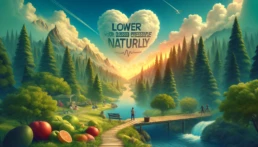Can Nitric Oxide Be Harmful?
People Are Asking, Can Nitric Oxide Be Harmful?
Introduction
Nitric oxide has increasingly made the news rounds and been a topic of conversation. It is a vital molecule that signals various processes in the human body. The most notable process is helping to relax and dilate blood vessels. This improves blood flow and reduces blood pressure. It also supports immune function and nerve signaling. Interestingly, supplements marketed to boost nitric oxide don’t actually contain the molecule itself. Instead, they contain ingredients that stimulate the body to produce more nitric oxide naturally.
So, Can Nitric Oxide Be Harmful?
If you are concerned about having too much no because of some supplement, then you can stop here. You are totally safe.
No supplement has nitric oxide in it. They all work by stimulating your body to produce nitric oxide. And your body will almost always stop making it, well before any harmful levels would develop.
Amino Acids Like L-arginine
It is true that taking significantly high doses of L-arginine can potentially lead to various side effects. Excessive intake of L-arginine is more typically associated with gastrointestinal discomfort, changes in blood pressure, electrolyte imbalances, and other systemic reactions rather than directly causing dangerously high levels of nitric oxide. The exact same is true for citrulline. The specific concern of producing too much nitric oxide isn’t commonly highlighted in scientific literature. So it’s just not something to be concerned with.
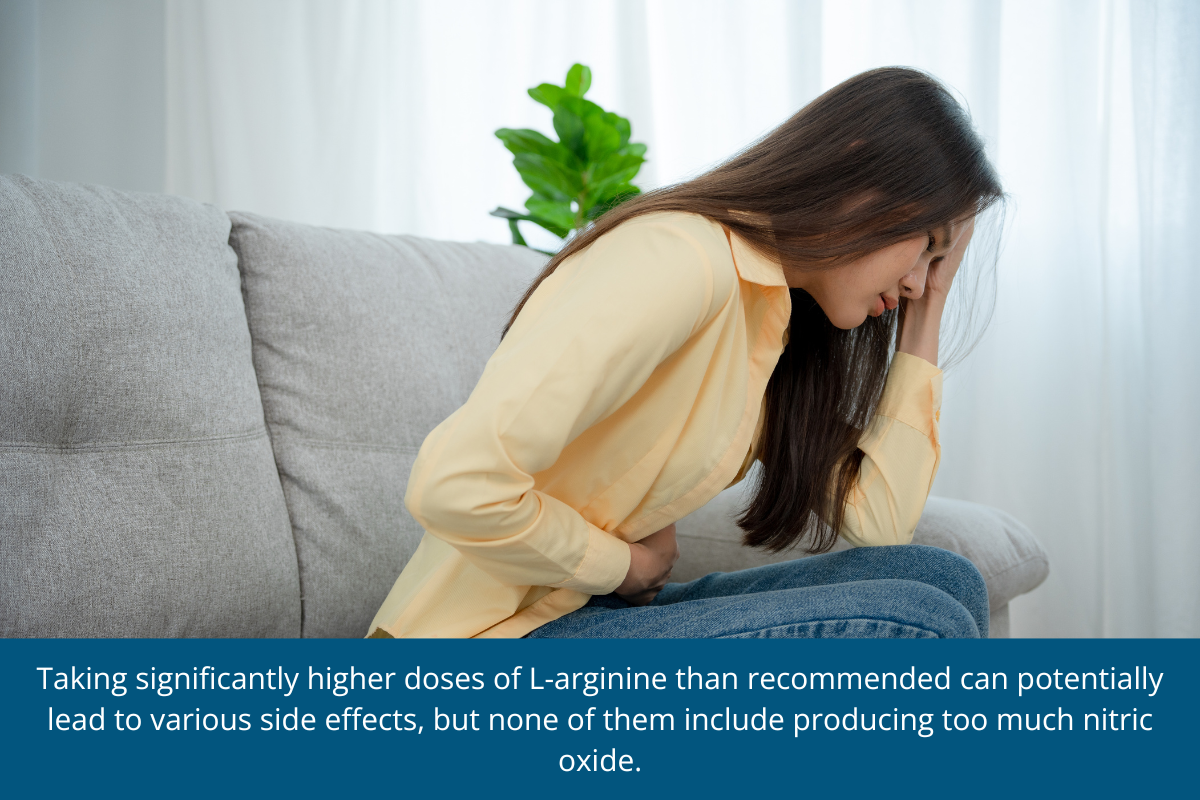
What About Beetroot? Can Nitric Oxide Be Harmful From Beetroot?
Beetroot is effective at increasing nitric oxide levels due to its high nitrate content. It does so in a way that is generally considered safe. It is not likely to lead to overstimulation of nitric oxide production. This moderation occurs because the conversion process from nitrates to nitric oxide is naturally regulated by the body’s own mechanisms. The body converts what it needs through a controlled pathway that begins in the mouth and continues in the stomach. This is key to avoiding the risk of excessive nitric oxide production that could occur with direct supplementation of nitric oxide precursors in high doses.
Gradual Increase Of NO
The increase in no from consuming beetroot is gradual and dependent on individual body chemistry and bacteria in the mouth. This further ensures that it does not lead to the spikes in nitric oxide levels that could potentially be harmful. This makes beetroot a safe and natural way to support cardiovascular health through moderate enhancement of nitric oxide levels.
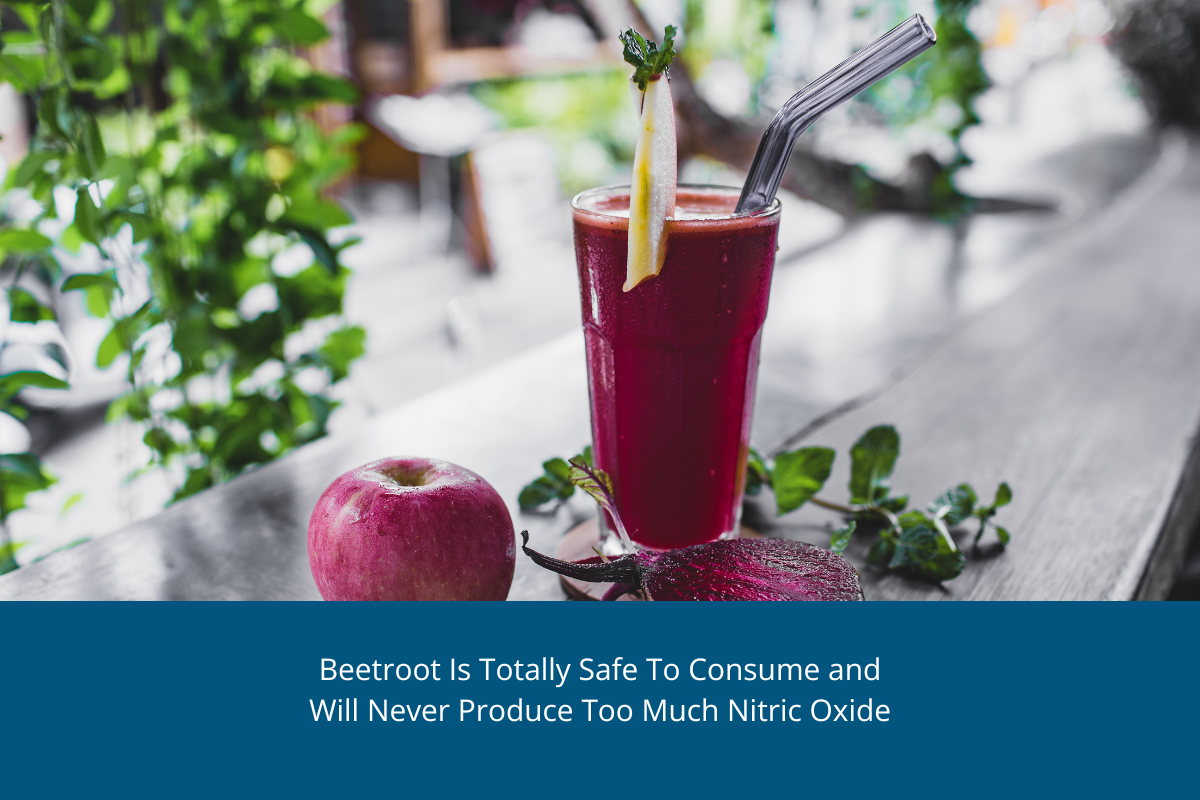
If you are concerned about maintaining optimal levels of nitric oxide, consider incorporating the following supplements and vitamins that can help ensure your body regulates it correctly:
Vitamins
Vitamin C – This antioxidant helps enhance the bioavailability of nitric oxide by stabilizing it and extending its functional lifespan in the bloodstream.
E – Known for its antioxidant properties, Vitamin E can also aid in the protection of cells and the enzymes responsible for nitric oxide production.
D3 – Adequate levels of Vitamin D are essential for cardiovascular health and may influence nitric oxide synthesis.
Herbs
Hawthorn Extract – Commonly used to support cardiovascular health, hawthorn increases the activity of enzymes that produce nitric oxide.
Grapes
Grape seed extract – is beneficial for regulating nitric oxide levels due to its high content of antioxidants, particularly oligomeric proanthocyanidin complexes (OPCs). These antioxidants are effective in several ways: Enhancing Nitric Oxide Production: Grape seed extract can help increase the production of nitric oxide by enhancing the activity of nitric oxide synthase, the enzyme responsible for its synthesis. This enzyme’s activity is positively influenced by the antioxidant properties of the extract, which reduce oxidative stress within blood vessels.
Protecting Nitric Oxide: The antioxidants in grape seed extract help protect nitric oxide from oxidative degradation. By reducing oxidative damage, more nitric oxide remains available and active in the bloodstream, which improves its overall effectiveness in dilating blood vessels and enhancing blood flow.
Improving Vascular Health: By supporting the integrity and function of blood vessels, grape seed extract helps maintain an environment where nitric oxide can be most effective. Healthy vascular conditions allow for better regulation and utilization of nitric oxide, ensuring it performs its critical roles in cardiovascular health efficiently.
Fruits & Berries
Camu camu – is a small, sour berry native to the Amazon rainforest. It’s celebrated primarily for its extraordinarily high vitamin C content, often cited as one of the richest natural sources. This makes camu camu a powerful antioxidant that can help boost immune function, protect skin health, and potentially reduce inflammation. Additionally, the high vitamin C level may aid in the natural production of nitric oxide, enhancing cardiovascular health through improved vascular dilation and blood flow.
Watermelon – is not only a refreshing fruit but also a significant source of the amino acid L-citrulline, which is important for cardiovascular and muscle health. When consumed, L-citrulline is converted by the kidneys into L-arginine and then into nitric oxide. This process helps to improve blood flow and lower blood pressure. Watermelon also contains various vitamins and antioxidants, contributing to hydration and overall health, making it both a delicious and nutritious choice.
Top 5 Reasons Why You Can't Lower Your Blood Pressure Naturally

So, you started taking nitric oxide supplements or beets to manage your blood pressure naturally. But the results are different from what you expected.
Or, maybe you started eating a more heart healthy diet, but it didn’t do much to improve your blood pressure or other conditions. What went wrong?
How To Lower Your Blood Pressure Naturally
Nitric oxide is key for opening up your blood vessels, which helps lower blood pressure. It’s a natural element your body makes that helps heal and open your blood vessels’ inner lining. Most nitric oxide boosting products like arginine, citrulline, and beets work via different means to increase your nitric oxide.
However, a few things might hinder the effectiveness of nitric oxide or stop it altogether. Let’s find out why.
1. Your Body Might Not Be Able To Make Nitric Oxide
Nitric oxide is essential for keeping your blood vessels wide and your blood pressure in check. Your body makes it with the help of an enzyme called NOS. Sometimes, this process should work better. This can happen because of stress or toxins in your body. If so, you won’t get enough nitric oxide from your supplements or food. If you want to lower your blood pressure naturally you need nitric oxide to work for you!
Heavy metals can interfere with Nitric Oxide Synthase (NOS), the enzyme crucial for producing nitric oxide (NO) in your body. Metals such as lead, mercury, arsenic, and cadmium are particularly harmful because they can disrupt the normal functions of enzymes and proteins. For NOS, heavy metals can:
- Compete with Essential Nutrients. They might block the sites on the enzyme where essential nutrients, like zinc, need to bind. Zinc is vital for NOS activity, and without it, the enzyme can’t work correctly.
- Cause Oxidative Stress. These metals can increase the production of harmful free radicals, leading to oxidative stress. This damages cells and enzymes, including NOS, reducing their effectiveness and thus decreasing NO production.
- Disrupt Cellular Functions. Heavy metals can interfere with cellular components, impairing the overall environment necessary for NOS to function properly and affecting its ability to produce NO.
Detoxifying your body from heavy metals is crucial for maintaining the health of enzymes like NOS. Products designed to support detoxification can help remove these metals from your system, potentially restoring the normal function of NOS and enhancing NO production.
Check out Bionox’s Chelanox. It helps clean out those toxins so your body can return to making the nitric oxide it needs.
2. Your Supplement or Foods Might Not Have Enough Nitrates
Nitrates are key to making nitric oxide, especially when they come from natural sources like beets and arugula. If your supplement is based on beetroot but doesn’t pack enough nitrates, or your overall diet is low in these vital compounds, you will likely not get the full NO-boosting benefits. Trying to lower your blood pressure naturally with nitrate based products that have no nitrates is a common problem unfortunately.
It’s important to remember that while arginine supplements work differently by directly supplying a precursor for NO production, beetroot supplements rely on nitrates to kickstart the process. You might want to add more nitrate-rich foods to your diet to cover all your bases. If you used a nitrated-based supplement or plan on doing so, make sure of one thing first. It has to have nitrates! Look on the label for the standardized nitrate count. If they do not list it, then chances are it has zero nitrates! You want at least 50 mg of nitrates per dose and should get 200 mg a day minimum for best results.
Consider Bionox Ultimate Beetroot Energy and Arugula Super Cardio Greens, designed to fill in gaps and ensure you’re getting a good nitrate boost. They both have 100 mg of natural nitrates guaranteed per dose.
3. Antioxidant Deficiency
Antioxidants are the body’s defenders, safeguarding nitric oxide (NO) and boosting its production by fighting off oxidative stress. This stress, if unchecked, can quickly neutralize NO, reducing its availability and effectiveness in your body. Essentially, without enough antioxidants, even if your body produces NO, it might not stick around long enough to do its job.
That’s where nitric oxide boosters like Ultimate Nitric Oxide Nutrition (UNON) shine. It’s packed with a powerhouse of antioxidants, including Vitamin C and E, known for their ability to protect NO. These ingredients don’t just fight off the harmful effects of oxidative stress; they also work to extend the lifespan of NO in your system.
With more NO available longer, your body can better maintain those wide, relaxed blood vessels, supporting overall circulation and blood pressure levels. So, suppose you’re finding your current NO supplement needing improvement. In that case, it might be time to look into options like Ultimate Nitric Oxide Nutrition that boost NO production and ensure it has a lasting impact.
4. Environmental and Lifestyle Factors Could Be At Play
Your surroundings and how you live day-to-day greatly impact your body’s ability to produce and maintain nitric oxide (NO) levels. Certain environmental and lifestyle factors can be like thieves at night, stealthily depleting your NO, making it harder to manage blood pressure naturally.
Pollution
Living in areas with high pollution exposes you to a barrage of toxins. These toxins can induce oxidative stress, overwhelming your body’s antioxidants and directly depleting your NO levels. The result? Your blood vessels lose their ability to dilate correctly, making it harder to keep your blood pressure in check. These may include the heavy metals already mentioned but may consist of forever chemicals that are much harder to remove.
Smoking
Lighting up a cigarette introduces harmful chemicals into your body, including carbon monoxide, which competes with NO for binding sites in your blood and tissues. This reduces NO availability and damages your blood vessels, compounding your blood pressure issues.
Stress
Chronic stress is another NO thief. It triggers the release of adrenaline, which constricts your blood vessels. Over time, this constant state of “fight or flight” can degrade the endothelium, the inner lining of your blood vessels, making them less responsive to NO.
Sedentary Lifestyle
Lack of physical activity can lead to endothelial dysfunction. Exercise helps boost NO production by increasing blood flow and stimulating the endothelium. Without it, your body’s ability to produce NO can diminish, affecting your blood pressure.
To combat these effects, consider making healthier lifestyle choices. Find ways to reduce exposure to pollution and toxins, quit smoking, manage stress through techniques like meditation or yoga, and incorporate regular exercise into your routine.
Alongside these changes, opting for supplements designed to fight these specific challenges can be a game-changer. Products that support NO production and provide additional antioxidants can help counteract the negative impacts of your environment and lifestyle choices. For example, supplements rich in antioxidants and other nutrients that support NO production, like Bionox’s Ultimate Nitric Oxide Nutrition, can provide a protective boost, helping your body to maintain better blood pressure management despite the challenges posed by your environment and lifestyle.
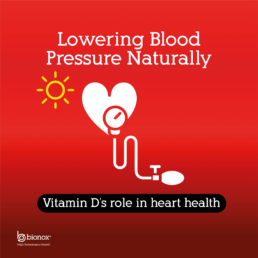
5. Underlying Health Conditions and Medications
Sometimes, the hurdle in managing your blood pressure naturally through nitric oxide (NO) isn’t just about diet or lifestyle—it can also stem from underlying health conditions and the medications used to treat them.
Here’s how these factors might be playing a role:
Health Conditions Like Diabetes and Hypertension: These conditions can impair the body’s ability to produce and utilize NO effectively. High blood sugar levels from diabetes can damage blood vessels, making them less responsive to NO. Hypertension can stress blood vessels constantly, reducing NO availability over time.
Medications That Lower NO Levels: Certain medications can inadvertently decrease your body’s NO production or availability. For instance:
- Antibiotics and Mouthwash: Surprisingly, these can disrupt the balance of good bacteria in your mouth and gut. These bacteria are crucial for converting dietary nitrates into NO. Without them, your body’s NO production can plummet, impacting blood pressure management.
- Other Medications: Some blood pressure medications, pain relievers (like non-steroidal anti-inflammatory drugs, or NSAIDs), and antacids can also interfere with NO production or availability in the body.
Low Vitamin D Levels: Vitamin D plays a multifaceted role in heart health and blood pressure regulation, including supporting the pathways that produce NO. Low vitamin D levels can hinder the body’s ability to produce NO, making it more challenging to manage blood pressure naturally.
Tackling the Issue:
- Reevaluate Your Medications: If you suspect your medications might be affecting your NO levels, it’s worth discussing alternatives or adjustments with your healthcare provider. Note, never stop or change medication without professional advice.
- Boost Good Bacteria: Consider dietary changes or supplements that support the healthy bacteria in your mouth and gut. Foods rich in probiotics or nitrate-rich vegetables can help support natural NO production.
- Increase Vitamin D Intake: Whether through diet, sunlight, or supplements, ensuring you have enough vitamin D can support your body’s NO production and offer broader health benefits.
By addressing these underlying factors, you can better support your body’s natural NO production and, in turn, your efforts to manage blood pressure more effectively.
Five Incredible Nitric Oxide Boosting Meals

Incorporating nitric oxide boosting meals into your diet can significantly enhance your health and fitness goals. Nitric oxide, a vital molecule your body produces, plays a crucial role in cardiovascular health by improving blood flow and reducing blood pressure. This article highlights five incredible meals that are not only delicious but also increase your body’s nitric oxide levels, promoting overall well-being.
1. Beetroot Salad with Citrus Dressing
Beetroot is an awesome powerhouse known for increasing nitric oxide levels in the body. This vibrant vegetable is rich in nitrates, which convert to nitric oxide. Combine beetroot with a citrus dressing made from lemon or orange to add a dose of Vitamin C. Vitamin C enhances nitric oxide production. For this delicious salad, mix sliced beets with your favorite greens, sprinkle with nuts for extra crunch, and drizzle with a citrus-based dressing. It’s a refreshing meal that boosts your nitric oxide levels. If you add arugula, you get even more nitrates! Be aware than not all commercially available beets have high nitrate counts, so it’s best to buy different types of beets and to include arugula to ensure higher nitrate concentration.
2. Garlic-Infused Grilled Chicken
Garlic is well-known for its health benefits, including its ability to increase nitric oxide levels. We here at Bionox have not sung garlic’s praises enough of late, but they are certainly due!
Prepare a garlic-infused grilled chicken by marinating chicken breasts in a mixture of minced garlic, olive oil, lemon juice, and herbs. Garlic stimulates the production of nitric oxide synthase, the enzyme responsible for converting nitrates to nitric oxide. This meal is not only heart-healthy but also full of flavor.
If you are vegan, a great alternative is kimchi, you can easily just up the garlic in kimchi or other fermented veggie combinations to boost your nitric oxide!
Garlic boosts nitric oxide levels through its high content of nitrates and a compound called allicin. When you eat some garlic, its compounds interact with red blood cells and trigger the production of nitric oxide synthase.
This enzyme is crucial for the conversion of dietary nitrates into nitric oxide (NO). Nitric oxide, in turn, plays a vital role in regulating blood flow, oxygen delivery, and blood pressure by dilating blood vessels. Additionally, garlic’swell known antioxidant properties may help protect nitric oxide molecules from oxidative damage, enhancing their stability and function in the body. In other words, antioxidants make nitric oxide stronger and last longer in the body. They are supportive to boosting nitric oxide.
This makes garlic an effective and natural way to increase nitric oxide levels, promoting cardiovascular health and overall well-being.
3. Arugula and Avocado Smoothie
Arugula is another nitrate-rich vegetable that boosts nitric oxide production. Combine it with avocado, which contains healthy fats that aid in nitric oxide absorption. Blend arugula, avocado, a banana for sweetness, and almond milk for a creamy texture. This green smoothie is a nutrient-packed meal that will increase your nitric oxide levels and keep you energized throughout the day.
Healthy fats, like those found in avocados, play an important role in boosting nitric oxide absorption and bioavailability in the body. The mechanism is slightly indirect though.
Monounsaturated Fats
Avocados are rich in monounsaturated fats, which have been shown to support cardiovascular health in various ways. One way we know if is through the improvement of endothelial function, which is the function of the inner lining of blood vessels. Good function means your body is producing more NOS, which is super important!
Healthy endothelial cells are vital for the production and maintenance of nitric oxide. If your arteries and veins are all gunked up with plaque for example, they can’t produce or deal well with nitric oxide.
Efficient Nitric Oxide Production
When the endothelium is healthy, it can produce nitric oxide more efficiently. Nitric oxide is a vasodilator, meaning it helps to relax and expand blood vessels. It opens up your veins thus improving blood flow and reducing blood pressure. Furthermore, the monounsaturated fats in avocados can help reduce inflammation and oxidative stress, both of which can damage the endothelium and impair its ability to produce nitric oxide. As a side note here, seed based oils do the opposite! They increase inflammation so avoid them if you can!
Studies
Studies have linked the consumption of avocados and other sources of healthy fats with cardiovascular benefits, including enhanced endothelial function and lower levels of inflammation, though direct studies on avocados and nitric oxide absorption are more nuanced and typically focus on the broader impacts of diet on nitric oxide levels and cardiovascular health.
4. Walnut-Crusted Salmon
Omega-3 fatty acids in salmon work synergistically with nitric oxide to improve blood flow. Coating salmon with crushed walnuts adds a crunchy texture and supplies additional L-arginine, a precursor to nitric oxide. Season the salmon with herbs and spices of your choice, crust it with crushed walnuts, and bake. This meal is a delicious way to boost your nitric oxide levels and support heart health at the same time!
5. Dark Chocolate Oatmeal
Dark chocolate is not only a treat for your taste buds but also beneficial for nitric oxide levels. It contains flavonoids that stimulate nitric oxide production. Prepare a bowl of oatmeal and add dark chocolate chunks, berries, and a sprinkle of chia seeds for an antioxidant.
Chocolate Is Now Officially Good For You
The FDA has announced that it will not object to certain qualified health claims about the consumption of cocoa flavanols in high flavanol cocoa powder and its association with a reduced risk of cardiovascular disease. Cocoa is another name for Chocolate in case you didn’t know.
This approval is contingent on the claims being accurately worded to avoid misleading consumers and meeting other specified conditions. The health claims are based on scientific evidence connecting cocoa flavanols to cardiovascular health benefits. The qualified health claim is specific to high flavanol cocoa powder and does not apply to regular cocoa powder or chocolate products.
Types Of Arginine And Health Benefits

The Types Of Arginine are important to know because each type can offer slightly different benefits. Lets dive deeper and find out why.
L-Arginine plays a pivotal role in numerous physiological processes, offering various health benefits. It supports blood pressure, circulation, and offers many health benefits.
Its different forms cater to specific needs, so some enhance its overall effectiveness and some its bioavailability. Let’s delve into the details of each type and how they are made.
L-Arginine HCl (Hydrochloride)
L-Arginine HCl (Hydrochloride) is a variant of the amino acid L-Arginine. It is crucial for several bodily functions. The list is large, including protein synthesis, ammonia detoxification, and the production of nitric oxide. The key difference between L-Arginine HCl and regular L-Arginine lies in their composition and solubility.
Differences from Base Arginine
- Composition: L-Arginine HCl combines L-Arginine with a hydrochloride molecule. This addition helps to stabilize the arginine, making it more palatable and increasing its solubility in water.
- Solubility: The primary advantage of L-Arginine HCl over base arginine is its enhanced solubility. This feature makes it easier to consume in liquid form and potentially improves its absorption in the digestive system.
- Taste: The hydrochloride form is generally considered to have a more tolerable taste comparing it to the base form, which is quite bitter.
Uses and Preferences
L-Arginine HCl is known for its various uses, particularly in areas related to cardiovascular health, athletic performance, and recovery from injuries or surgeries:
- Cardiovascular Health: Due to its role in nitric oxide production, L-Arginine HCl is often used to support cardiovascular functions. This includes improving blood flow and reducing blood pressure.
- Athletic Performance: Athletes may prefer L-Arginine HCl. It has strong potential for improving blood flow and oxygen delivery to muscles during intense workouts. It is good for enhancing performance and recovery.
- Wound Healing: Its ability to improve circulation also makes L-Arginine HCl a candidate for supporting faster wound healing.
Choosing L-Arginine HCl over Other Forms
The choice between L-Arginine HCl and other forms of L-Arginine often depends on the specific needs and preferences. Also important are potential sensitivities people may have:
- Digestibility and Absorption: Those who might have sensitivity to the base form or require a more easily absorbed variant may opt for L-Arginine HCl due to its enhanced solubility.
- Specific Health Goals: L-Arginine HCl might be preferred for cardiovascular support or to enhance exercise performance, where rapid absorption and efficacy are desired.
- Taste Preferences: The less bitter taste of L-Arginine HCl can make it a more palatable option for individuals who struggle with the taste of base L-Arginine supplements.
In summary, while all forms of L-Arginine provide similar fundamental benefits due to their role in nitric oxide production and protein synthesis, the choice of L-Arginine HCl over others might be influenced by its solubility, absorption rate, taste, and specific health objectives. Always consulting with a healthcare provider before starting any new supplement regimen is advisable to ensure it aligns with your health needs and goals.
L-Arginine AKG (Alpha-Ketoglutarate)
Arginine AKG (Alpha-Ketoglutarate) combines the amino acid L-Arginine with Alpha-Ketoglutarate, a crucial molecule in the Krebs cycle, responsible for energy production. This blend offers unique benefits over base L-Arginine and other Arginine forms.
Differences from Base Arginine
- Composition: The key difference lies in Alpha-Ketoglutarate’s addition to L-Arginine, enhancing the compound’s role in amino acid synthesis and energy generation.
- Absorption and Effectiveness: The body absorbs and utilizes L-Arginine AKG more efficiently than base L-Arginine. Alpha-Ketoglutarate increases L-Arginine’s stability and bioavailability.
- Energy Production: L-Arginine AKG’s involvement in the Krebs cycle makes it highly effective in boosting energy, offering significant benefits for energy-demanding activities.
Uses and Preferences
L-Arginine AKG is particularly popular for specific uses, mainly in the realms of athletic performance and recovery:
- Enhanced Athletic Performance: Athletes and bodybuilders often choose L-Arginine AKG for its superior ability to boost nitric oxide production, enhancing blood flow, oxygen delivery to muscles, and overall performance.
- Supports Muscle Recovery: The compound aids in quicker muscle recovery post-intense workouts by improving nutrient delivery to muscles.
- Energy Boost: People looking for an energy increase during physical activities benefit from L-Arginine AKG, thanks to its critical role in the energy production cycle.
Choosing L-Arginine AKG over Other Forms
Choosing L-Arginine AKG over other Arginine forms usually aligns with specific goals, especially concerning physical performance and energy needs:
- For Athletic Performance and Recovery: Individuals aiming to maximize physical performance and enhance muscle recovery might find L-Arginine AKG more suitable due to its nitric oxide production and absorption benefits.
- For Energy Enhancement: Those in need of an energy uplift for workouts or athletic endeavors may prefer L-Arginine AKG for its direct involvement in energy production.
L-Arginine Aspartate
Arginine Aspartate stands out from L-Arginine AKG and base L-Arginine due to its unique combination and specific applications:
Unique Characteristics of L-Arginine Aspartate
- Aspartate Component: Unlike AKG, which is involved in the Krebs cycle and energy production, aspartate plays a critical role in the urea cycle. It is adept at helping to eliminate excess nitrogen from the body. This function of aspartate can enhance endurance by efficiently removing ammonia. Ammonia is a byproduct of exercising muscle, thus potentially reducing fatigue.
- Neurotransmitter Support: Aspartic acid acts as a neurotransmitter in the brain. This can influence the production of testosterone, enhancing hormone levels that are crucial for muscle mass and strength. This aspect differentiates it from L-Arginine AKG, which does not directly influence neurotransmitter levels or hormone production.
- Enhanced Endurance and Recovery: Both AKG and aspartate forms are known for their potential to enhance athletic performance,. L-Arginine Aspartate however, specifically offers benefits related to endurance and recovery. This is due to its role in ammonia detoxification.
Applications and When to Use L-Arginine Aspartate
- For Enhanced Endurance Sports Performance: Due to its efficient role in ammonia detoxification, individuals engaged in endurance sports might prefer L-Arginine Aspartate to support longer periods of physical activity and to reduce recovery time.
- When Seeking Hormonal Support: Those looking into natural ways to support hormone production, particularly testosterone, might find L-Arginine Aspartate beneficial due to the neurotransmitter role of aspartic acid.
- For Comprehensive Athletic Support: Athletes focusing on both performance and recovery, especially in sports that demand high endurance, might choose L-Arginine Aspartate over AKG or base L-Arginine for its dual action in energy metabolism and detoxification.
In contrast to L-Arginine AKG, which is often chosen for its direct benefits on energy production and nitric oxide synthesis, L-Arginine Aspartate offers a broader spectrum of support, particularly beneficial for endurance and recovery, making it a distinct choice for athletes and individuals seeking specific health benefits.
L-Arginine Malate
Arginine Malate is a compound that combines L-Arginine with Malate, a tricarboxylic acid cycle (TCA cycle or Krebs cycle) intermediate. This combination offers distinct advantages and uses compared to other forms of L-Arginine.
Differences and Unique Benefits of L-Arginine Malate
- Enhanced Energy Production: Malate plays a crucial role in the Krebs cycle, a key energy-producing process in the body. L-Arginine Malate, therefore, not only boosts nitric oxide levels but also supports energy production at a cellular level. Therefore making it particularly beneficial for endurance and performance.
- Improved Athletic Performance: Due to its dual role in enhancing nitric oxide production and supporting the Krebs cycle, L-Arginine Malate is often chosen by athletes. They choose it seeking to improve their performance, endurance, and recovery times.
- Support for Aerobic and Anaerobic Metabolism: The presence of Malate supports both aerobic (with oxygen) and anaerobic (without oxygen) energy pathways, offering a versatile energy boost that can be beneficial across different types of physical activities.
Contrast with Other Forms of L-Arginine
- L-Arginine HCl: While L-Arginine HCl is primarily sought after for its improved solubility and absorption, L-Arginine Malate offers the added benefit of supporting energy production, making it a more suitable choice for individuals looking to enhance physical performance and energy levels.
- L-Arginine AKG: Although L-Arginine AKG is also known for its role in energy production and nitric oxide synthesis, L-Arginine Malate might be preferred for activities that require sustained energy over longer periods, due to the efficient role of Malate in the Krebs cycle.
- Base L-Arginine: The base form of L-Arginine primarily serves to increase nitric oxide production. However, L-Arginine Malate extends beyond this by also enhancing energy production, offering a broader range of benefits for physical activity and performance.
When to Use L-Arginine Malate
- Endurance Athletes: Individuals engaged in long-duration sports or activities may find L-Arginine Malate particularly beneficial for its dual role in boosting nitric oxide levels and supporting sustained energy production.
- Those Seeking Enhanced Recovery: The improved blood flow from increased nitric oxide production, combined with efficient energy metabolism, can help facilitate quicker recovery after intense workouts.
- Individuals Focused on Aerobic and Anaerobic Performance: L-Arginine Malate’s support for both energy pathways makes it an excellent choice for athletes who engage in a mix of aerobic and anaerobic exercises.
In summary, L-Arginine Malate offers unique benefits that make it stand out from other forms of L-Arginine, especially for athletes and individuals seeking to improve their energy levels, performance, and recovery. Its ability to support nitric oxide production and energy metabolism simultaneously provides a comprehensive approach to enhancing physical performance.
In essence, L-Arginine AKG stands out for individuals focused on sports performance. It’s great for recovery, and energy thanks to its enhanced bioavailability and contribution to energy metabolism. Each of these forms of L-Arginine is designed to optimize the amino acid’s benefits. Whether used for improving cardiovascular health, enhancing athletic performance, or supporting overall well-being. The choice of form can depend on the desired effect, the method of delivery, and individual tolerance.
Top 5 Reasons to Stop Taking Arginine Alone
Stop Taking Arginine you say? Is there a reason you should stop or is there simply a better way to take it? Lets see!
Scientists discovered arginine, an amino acid, in the late 19th century. Its use has surged in popularity over the years as a coveted supplement among athletes and fitness enthusiasts. It is also popular amoung those seeking to improve their cardiovascular health. Also, it can support lower blood pressure and offers support for those seeking cognitive improvements.
What Is Arginine?
This semi-essential amino acid plays a pivotal role in synthesizing proteins and supporting nitric oxide production in the body. It also enhances blood flow and nutrient delivery to muscle tissues. Its reputation for boosting exercise performance, aiding in recovery, and offering cardiovascular benefits is well know. This reputation has cemented arginine’s place on the shelves of health stores and in the regimens of health-conscious individuals worldwide. But does it work? Should you stop taking arginine?
The burgeoning interest in arginine has also ushered in a wave of scrutiny and research aimed at understanding its efficacy.
Arginine’s Benefits
Arginine’s benefits are not in dispute. Emerging evidence, however, suggests that its effectiveness can be significantly amplified when combined with other nutrients. So and we aim to show why your should stop taking arginine alone. This article aims to shed light on the limitations of solo arginine supplementation. We strongly advocate for its combination with other nutrients because of improved health outcomes.
One of the primary reasons behind the push for combining arginine with other ingredients lies in its bioavailability. The body’s ability to utilize it effectively is a common concern. It also has a powerful effect of other substances such as NOS ( Nitric Oxide Synthase). When taken alone, the absorption of arginine can encounter physiological barriers that limit its effectiveness, absorption and lifespan.
Other Amino Acids
The presence of other amino acids can compete with arginine for absorption in the gut. This reduces the amount that ultimately enters the bloodstream and reaches the tissues where it is most needed. However, some amino acids have the opposite effect and can boost its effect! Just this alone is a great justification for why you should stop taking arginine alone!
This competition from the wrong kinds of amino acids can diminish the perceived benefits of arginine. This is particularly so in the realms of exercise performance and cardiovascular health.
Better Blood Vessel Dilation
Arginine’s role in the production of nitric oxide has been well-documented. This is because the conversion of arginine into nitric oxide can be inefficient without other complementary nutrients. This inefficiency highlights another limitation of relying solely on arginine. To achieve desired health outcomes, such as improved blood flow and improved exercise capacity, more is needed.
The case for combining arginine with other nutrients also extends to its synergistic interactions with certain vitamins and minerals. For example, vitamin D has been shown to work in tandem with arginine to bolster the immune system. It also plays a role in helping to support bone health. Antioxidants like vitamins E and C can enhance arginine’s cardiovascular benefits by reducing stress and inflammation. These interactions underscore the multifaceted nature of nutrition and wellness. This is because the combined effect of different nutrients often surpasses the sum of their individual benefits.
Arginine As A Supplement
The purpose of this article is not to diminish the value of arginine as a supplement. We aim to illuminate a more nature based approach to its use. By combining arginine with complementary nutrients such as citrulline, vitamin D, horse chestnut, and vitamins E and C, individuals can potentially unlock a broader spectrum of health benefits and achieve more pronounced improvements in cardiovascular health, exercise performance, and overall well-being.

As we delve deeper into the limitations of solo arginine supplementation it becomes clear that the path to optimal health is not through isolated ingredients. We see it is through a well-rounded and informed approach to nutrition. This perspective enriches our understanding of how different nutrients interact. It also empowers us to make more effective decisions about our health and wellness strategies.
Reason 1: Limited Absorption and Bioavailability
Arginine, when consumed as a standalone supplement, faces significant challenges related to its absorption and bioavailability in the human body. This amino acid competes with other amino acids for transporters in the gut and bloodstream. This competition can significantly reduce the amount of arginine that is effectively absorbed and utilized by the body. Yet another reason why you should stop taking arginine alone.
Absorption
The presence of other amino acids in the digestive system can inhibit arginine’s entry into the bloodstream. This sometimes diminishes its overall effectiveness, making it a waste of time and money to consume.
The bioavailability of arginine is not just about how much is absorbed. How efficiently it is used by the body is also important. This is because once absorbed, arginine serves as a precursor for the synthesis of nitric oxide (NO). As mentioned before NO a critical molecule for cardiovascular health, immune function, and wound healing.
The conversion rate of arginine to nitric oxide can be lowered or just plan stopped in the absence of complementary nutrients. This leads to less than ideal health outcomes. So to summarize, add the wrong things and arginine may not work. Add the right things and you can put it in overdrive!
Combinations That Count: Stop Taking Arginine By Itself
The issue of limited absorption and bioavailability underscores the importance of not just consuming arginine but ensuring it is taken correctly. This can be improved by combining arginine with other things that enhance its absorption or work together to bolster its effects.
For instance, pairing arginine with citrulline, another amino acid, has been shown to enhance the overall bioavailability of arginine, see chart below for more info.
Citrulline is converted into arginine in the kidney, which not only increases the plasma levels of arginine but also prolongs its availability for nitric oxide production, thereby amplifying the cardiovascular benefits.
Summary of Reason #1
So in summary, while arginine alone possesses undeniable health benefits, its limited absorption and bioavailability can hinder its effectiveness. There are great reasons why you may want to stop taking arginine alone. By understanding and addressing these limitations through strategic supplementation, individuals can better harness arginine’s potential health benefits. This approach not only optimizes the intake of arginine but also underscores a broader principle. That being; nutritional supplementation often yields the best results when approached naturally.
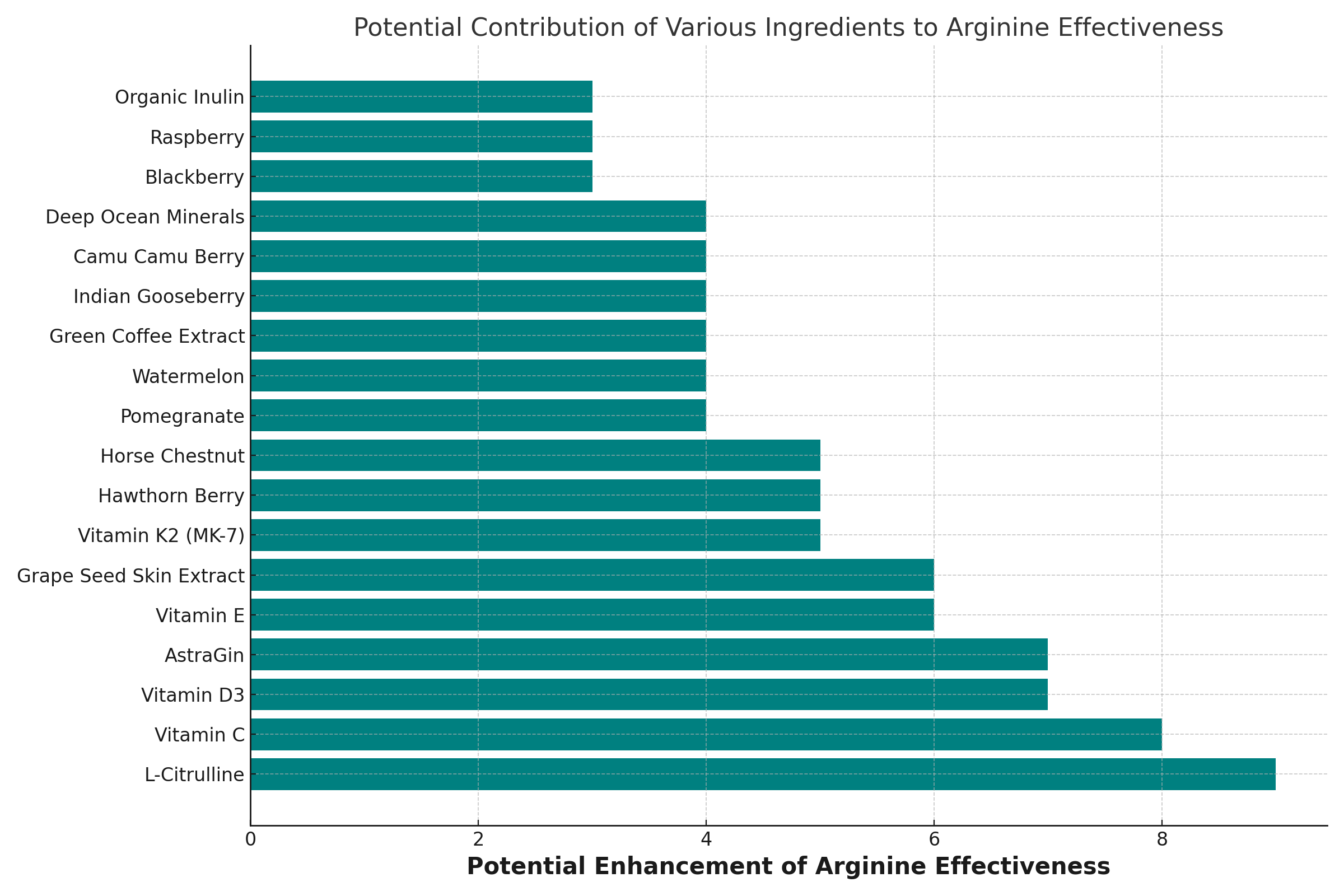
Stop Taking Arginine Alone
- Vitamin C: Enhances nitric oxide production from Arginine by stabilizing it and reducing its breakdown.
- Vitamin D3: Works synergistically to support cardiovascular health and may enhance the effectiveness of Arginine. Vitamin D also helps your body produce more NOS.
- Vitamin E: Protects cells from cellular stress, potentially enhancing Arginine’s effects on vascular health.
- Vitamin K2 (MK-7): May work with Arginine to support arterial health and flexibility.
- L-Citrulline: Converts to Arginine in the body, increasing Arginine levels and nitric oxide production.
- Pomegranate, Watermelon, Blackberry, Raspberry: These fruits are rich in antioxidants and other compounds that can support nitric oxide production and enhance the effects of Arginine.
- Hawthorn Berry, Horse Chestnut: Known for their vascular health benefits, potentially complementing Arginine’s cardiovascular effects.
- Green Coffee Extract, Indian Gooseberry, Grape Seed Skin Extract, Camu Camu Berry: These ingredients offer antioxidant support, which can synergize with Arginine’s health benefits.
- Deep Ocean Minerals: May provide trace minerals that support overall metabolic processes, including those involving Arginine.
- AstraGin: Known to enhance nutrient absorption, potentially improving Arginine bioavailability.
- Organic Inulin: A prebiotic fiber that can support gut health, possibly affecting Arginine’s absorption positively.
Cardiovascular Health
Arginine is well-known for its critical role in the production of nitric oxide (NO). NO is a vital molecule that influences various aspects of cardiovascular health as we have discussed above.
Nitric oxide acts as a vasodilator, meaning it relaxes the inner muscles of blood vessels. This causes them to widen and thereby improve blood flow and energy, etc.
This effect can lower blood pressure, enhance exercise performance, and reduce the risk of cardiovascular diseases. It even helps with some cognitive issues and diseases of the eye as well.
Despite its potential, the production of nitric oxide from arginine can be hampered when arginine is consumed alone. This is due to factors like enzyme availability, oxidative stress, and the presence of asymmetric dimethylarginine (ADMA). ADMA is a natural inhibitor of nitric oxide synthesis. In other words, if you stop taking arginine by itself, you get more of it. The results are better if your taking it with the right things.
Citrulline
The combination of arginine with citrulline is a strategy that can overcome these limitations. Combining the two can lead to more efficient nitric oxide production. This is yet another reason why you may want to top taking arginine alone. Citrulline is converted into arginine in the kidneys. It increases the plasma levels of arginine and also provides a more sustained release of arginine for nitric oxide production. Combining bypasses the competitive absorption issues in the gut. It also helps maintain higher levels of nitric oxide in the bloodstream. Combining the two enhanci cardiovascular benefits such as improved vascular tone, blood flow, and reduced blood pressure.
Vitamins E, C, and K2
These play supportive roles in enhancing nitric oxide production and ensuring its stability:
Vitamin E
This antioxidant helps protect nitric oxide from degradation via oxidatiion that can rapidly neutralize nitric oxide. It reduces the availability and effectiveness of NO in vasodilation. By reducing oxidative stress, vitamin E preserves nitric oxide levels. More NO means more cardiovascular benefits.
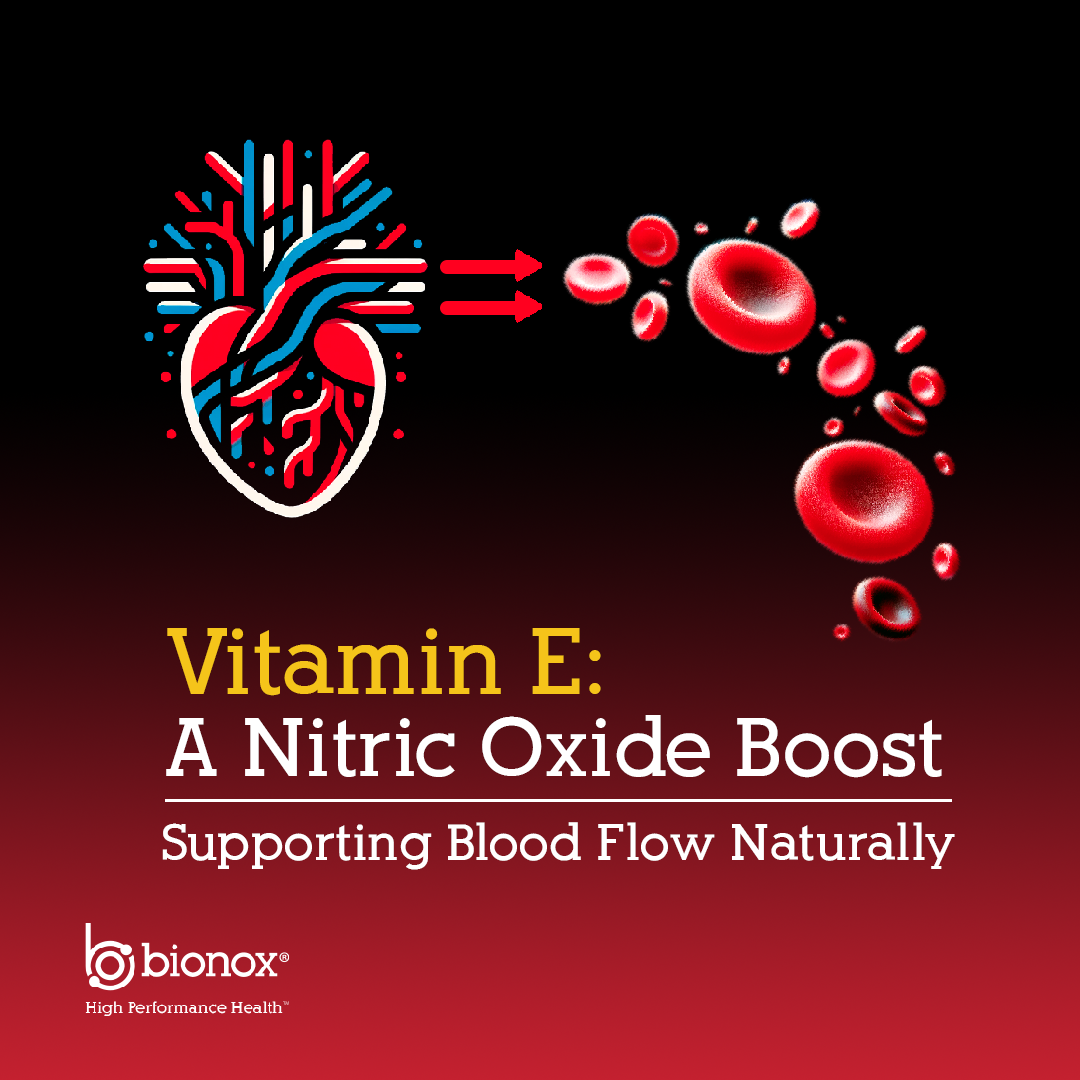
Vitamin C
Similar to vitamin E, vitamin C is an antioxidant that can synergize with arginine by stabilizing nitric oxide. Vitamin C reduces its breakdown in the bloodstream. C has also been shown to regenerate vitamin E, thus working together. These vitamins create a powerful antioxidant network that protects nitric oxide and enhances its effects on blood vessel dilation.
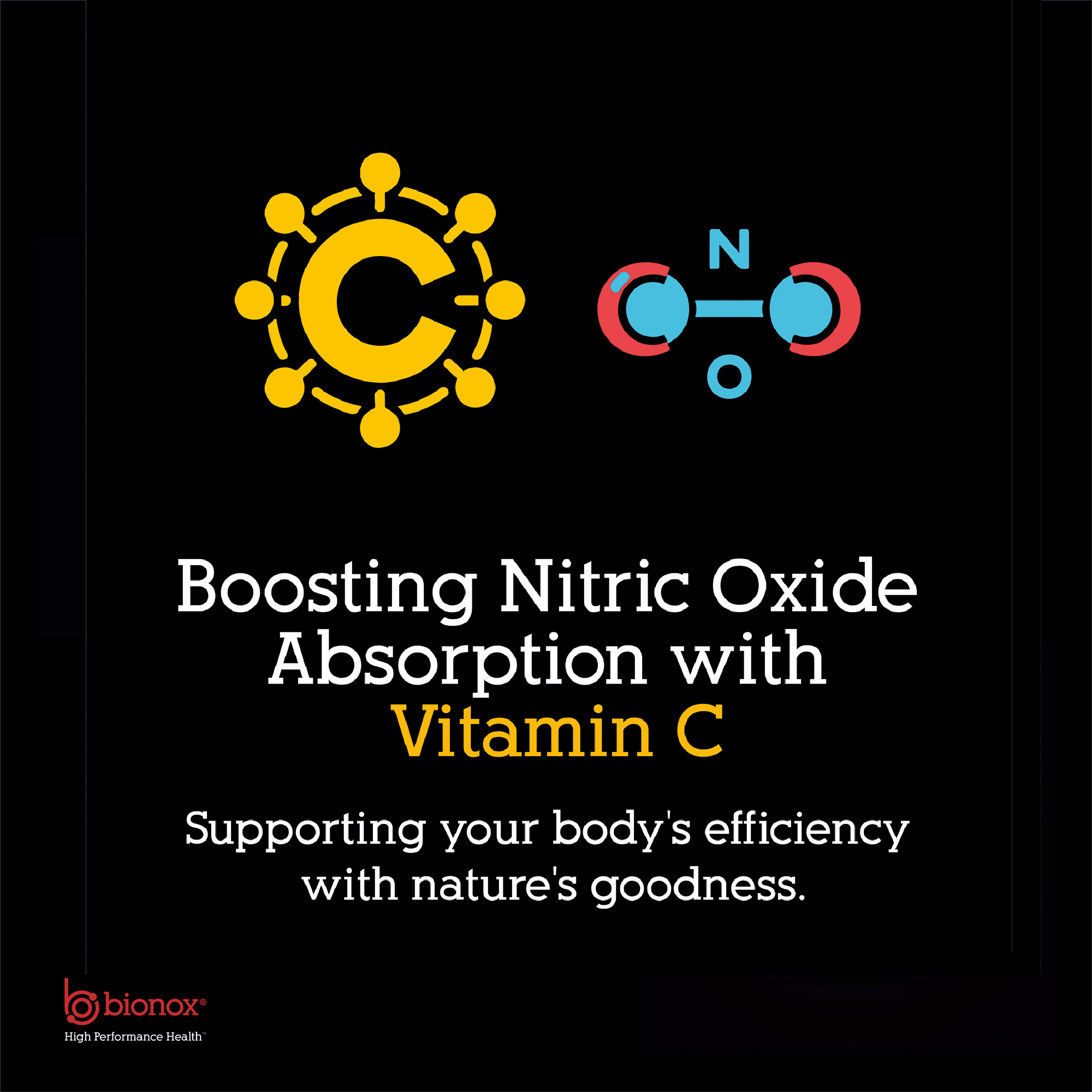
Vitamin K2 (MK-7)
While its role in nitric oxide production may not be as apparent as other vitamins, vitamin K2 contributes to cardiovascular health. It does so by preventing calcium deposition in the arteries. This action helps maintain arterial flexibility and function. There is emerging evidence that vitamin K2 may also support the endothelial function. This is is crucial for nitric oxide production and regulation. By promoting overall vascular health, vitamin K2 can indirectly support the optimal function of nitric oxide.
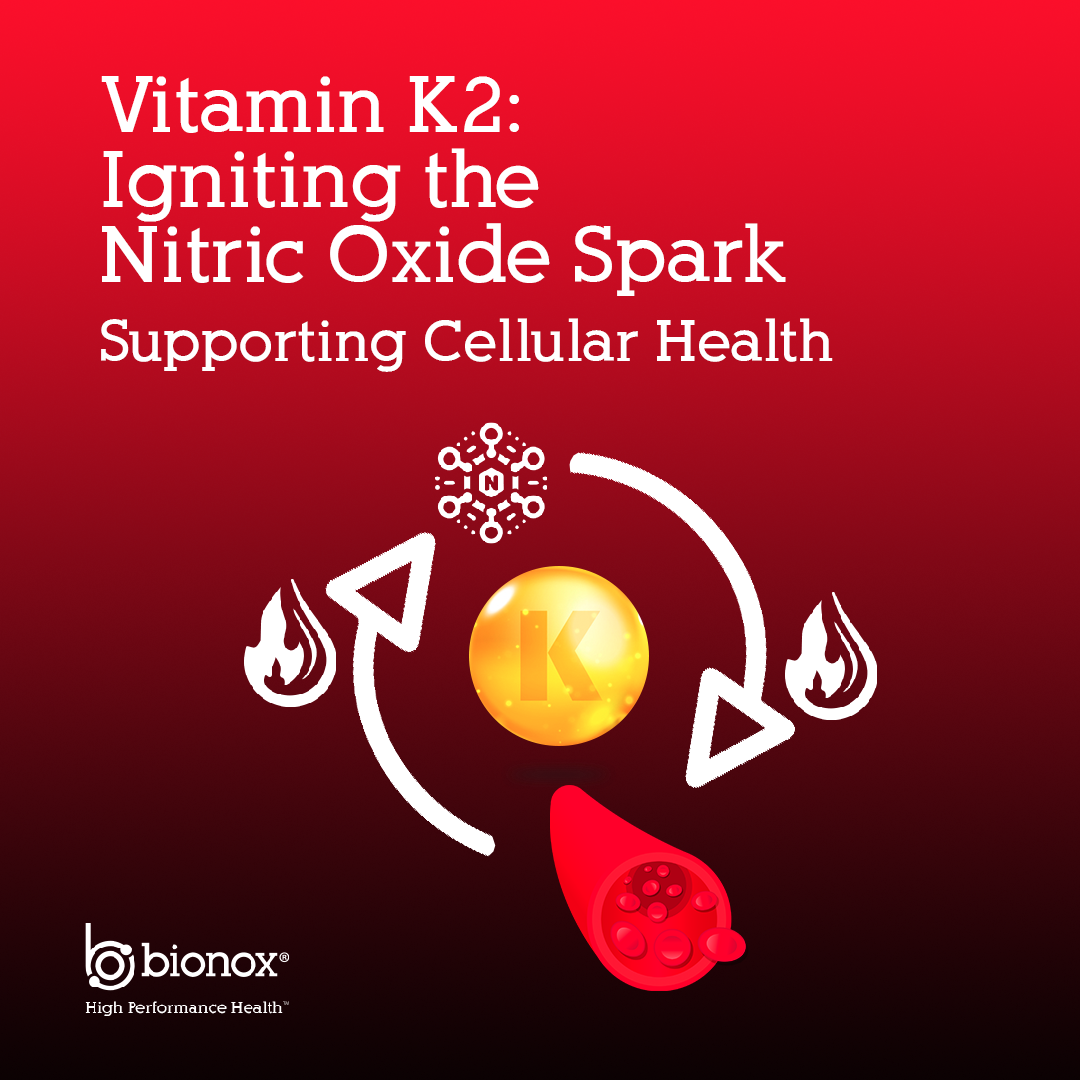
So, while arginine is a key precursor to nitric oxide its solo use can result in poor nitric oxide production. This is due to various physiological constraints, making it kind of a waste of money to take alone.
Combining arginine with citrulline and other vitamins can significantly enhance the production of nitric oxide. This strategic supplementation approach not only amplifies the cardiovascular benefits. It also supports broader health outcomes and benefits. This is done by ensuring efficient blood flow and nutrient delivery throughout the body and therefore more nitric oxide.
Reason 3: Inadequate Support for Vascular Health
Vascular health is fundamental to the overall well-being of the cardiovascular system, brain, gut, you name it. Healthy blood vessels are essential for the efficient transport of oxygen and nutrients to every part of the body. They also are vital for the removal of waste products, energy, vitality and pretty much everything.
Good vascular health also plays a critical role in preventing conditions such as atherosclerosis, hypertension, and PAD to name a few. While arginine is renowned for its capacity to enhance nitric oxide production and thus improve vasodilation and blood flow, relying on arginine alone might not offer comprehensive support for vascular health. This is because vascular health encompasses more than just the ability of blood vessels to dilate; it also includes the strength, elasticity, and integrity of the blood vessel walls.
Horse Chestnut
Enter the synergistic potential of combining arginine with horse chestnut (Aesculus hippocastanum), an herbal supplement known for its heart healthy properties. Horse chestnut can significantly enhance heart health. This amazing plant contains a compound called aescin. The active ingredients in aescin have been shown to strengthen capillary walls, reduce inflammation, and improve blood vessel tone. This can be particularly beneficial in conditions such as chronic venous insufficiency, where veins struggle to return blood to the heart efficiently.

The combination of arginine and horse chestnut works on multiple fronts to support vascular health. This is because of arginine’s role in nitric oxide production addresses the need for vasodilation and improved blood flow. Horse chestnut’s heart healthy and anti-inflammatory effects contribute to the structural health and functionality of the blood vessels.
Dual Action
This dual-action approach ensures that blood vessels are not only capable of adjusting their diameter for optimal blood flow but are also strong, resilient, and less prone to damage and inflammation.
Furthermore, the antioxidant properties of horse chestnut complement arginine’s cardiovascular benefits by protecting the endothelial cells lining the blood vessels. This protection can lead to stopping endothelial dysfunction, a precursor to atherosclerosis and other circulatory diseases. By stopping oxidative damage, the combination of arginine and horse chestnut supports the integrity of the inner veins, enhancing its capacity to produce nitric oxide and maintain vascular health.
In summary, while arginine alone offers significant benefits for enhancing nitric oxide production and improving vasodilation, it may not provide complete support for the multifaceted aspects of vascular health. Incorporating horse chestnut into a supplementation regimen that includes arginine can offer a more basic approach to maintaining and improving vascular health. This combination not only optimizes blood flow but also addresses the structural and functional needs of blood vessels, offering a comprehensive strategy for cardiovascular wellness.
Reason 4: Better Nitric Oxide Production with Vitamin D Supplementation: Stop Taking Arginine Alone
Vitamin D’s relationship with arginine extends beyond basic nutritional synergy, directly impacting the efficiency of nitric oxide (NO) synthesis and the activity of nitric oxide synthase (NOS), the enzyme responsible for NO production from arginine. This interaction is crucial for understanding how the combination of arginine and vitamin D can significantly amplify and promote cardiovascular health, immune function, and overall well-being.
Vitamin D has been shown to enhance the expression and activity of nitric oxide synthase, thereby increasing the conversion of arginine into nitric oxide and this increase in nitric oxide availability is vital for vasodilation, which improves blood flow and reduces blood pressure, supporting your heart.
More NO
The enhancement of NO production by vitamin D not only increases the heart health benefits provided by arginine but also supports the function of the inner lining of blood vessels, further protecting against arterial stiffness and cardiovascular disease.
The synergy between vitamin D and arginine in creating higher nitric oxide levels has broader health implications as well, especially for your immune system and bone health. Elevated NO levels can improve immune response by supporting the body’s defense mechanisms against diseases. Nitric oxide acts as a signaling molecule in the immune system, managing various processes involved in the immune response. Vitamin D, well-recognized for its role in supporting immune function and reducing inflammation, works in concert with arginine-derived NO to create a more effective immune response.
In terms of bone health, the improved blood flow resulting from increased nitric oxide production ensures that nutrients essential for bone maintenance, including calcium and phosphate, are efficiently delivered and utilized in the body.
Calcium Absorption
Vitamin D plays a direct role in calcium absorption and bone mineralization, making its combination with arginine a strategic approach to supporting skeletal health and heart health.
Arguing for the effectiveness of taking arginine with vitamin D rests on understanding these mechanisms as well as vitamin D’s ability to increase nitric oxide synthase and increase nitric oxide production from arginine. This provides a compelling reason to combine Vit D for improved health outcomes. This synergy not only enhances cardiovascular benefits by improving vascular function and reducing blood pressure but also supports robust immune function and contributes to the maintenance of healthy bones.
The combination of arginine and vitamin D offers a potent approach to health supplementation, with vitamin D significantly enhancing the conversion of arginine into nitric oxide and thereby amplifying the benefits of arginine supplementation. This partnership between vitamin D and arginine underscores the importance of a natural approach to supplementation, where the combined effects of nutrients are leveraged to achieve the best health outcomes.
Reason 5: Reduced Antioxidant Protection
Antioxidants play a pivotal role in safeguarding the body against oxidation, a condition characterized by an imbalance between free radicals and antioxidants. Free radicals are unstable molecules that can damage your cells, contributing to aging and various diseases, including cardiovascular disease, diabetes, and cancer, obviously things no one wants!
Antioxidants neutralize these nasty free radicals, thus protecting the body from damage. While arginine is known for its cardiovascular and immune system benefits, its antioxidant potential can be significantly improved when combined with vitamins E and C, both of which are powerful antioxidants. Also antioxidants make the nitric oxide molecule last longer, so they boost nitric oxides lifespan, and therefore effect! Yet another good reason you want to stop taking arginine by itself!
Vitamin E
Vitamin E is a fat-soluble antioxidant that protects cell membranes from cellular damage by reacting with free radicals, which prevents the propagation of free radical damage within the body. This vitamin is particularly effective in protecting against lipid peroxidation, a process that can compromise cell membrane integrity and function. By maintaining cell membrane health, vitamin E supports the optimal functioning of cells, including those involved in the synthesis and utilization of arginine.
Vitamin C, a water-soluble antioxidant, complements vitamin E by neutralizing free radicals in the aqueous environments of the body. Furthermore, vitamin C can regenerate oxidized vitamin E, thereby restoring its antioxidant capacity making this a synergistic interaction that enhances the body’s overall antioxidant defense system.
Vitamin C
Vitamin C also plays a crucial role in the synthesis of collagen, a protein essential for the maintenance of blood vessels, skin, and connective tissues. The presence of adequate vitamin C can thus support the structural health of blood vessels, ensuring a conducive environment for arginine’s cardiovascular benefits.
The combination of arginine with vitamins E and C offers a multi-faceted approach to combating oxidative stress and supporting your health. Arginine, through its role in nitric oxide production, can improve vascular health and support the delivery of nutrients, including antioxidants, to tissues throughout the body while, vitamins E and C directly neutralize free radicals and protect against cellular damage. This collective action increases the antioxidant potential of these nutrients and also enhances their individual benefits. These benefits being mostly related to cardiovascular health, immune function, and tissue repair.
Advocating for the combination of arginine with vitamins E and C is grounded in the understanding that optimal personal health outcomes are often achieved through synergistic nutritional strategies.
This approach leverages the complementary actions of arginine and antioxidants to fortify the body’s defenses against disease, thereby supporting overall health and well-being.
By incorporating these nutrients into a comprehensive supplementation regimen, you can harness a more potent antioxidant defense, offering broader protection against damage and its associated health risks.
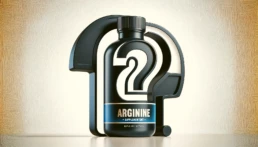
Debunking the Myth: Does L-Arginine Work?
Does L-Arginine Work?
In the world of health supplements and nitric oxide products, few amino acids have garnered as much attention as L-Arginine, particularly for its role in producing nitric oxide (NO), a molecule vital for vascular health.
However, as with many popular supplements, L-Arginine has seen its fair share of detractors. Some companies, possibly driven by motives to promote their own products or strategies, claim that L-Arginine does not work. Let’s dive into these assertions, understand their basis, and examine the broader picture.
Does L-Arginine Work? Why Do Some Claim L-Arginine Doesn’t Work?
- Selective Interpretation of Research: Some of the most vocal criticisms stem from some studies suggesting that L-Arginine supplementation may not always result in improved NO production, especially in those with compromised endothelial function. These very limited studies sometimes conclude that the Nitric Oxide Synthase (NOS) enzyme, responsible for converting L-Arginine to NO, might not operate efficiently in everyone. It is important to keep in mind there are almost 100,000 studies showing arginine roles in promoting health and supporting nitric oxide. Yet only a handful of studies show no effects or negative effects.
- Marketing Motives: It’s no secret that the health industry is competitive. Companies vying for a larger market share of the NO-boosting segment might downplay the benefits of L-Arginine to promote alternative products, like beetroot extracts. Everyone is looking for a unique angle and message; the goal is to sell you their unique product.
- Misunderstanding of Mechanisms: The process of NO production is complex. It’s not just about consuming L-Arginine; other factors like oxidative stress, the presence of heavy metals, and overall health can impact the efficiency of the NOS enzyme.

Why L-Arginine DOES Work: Looking Beyond the Myths
- Overwhelming Positive Research: While there are a few studies pointing to the limitations of L-Arginine, there are thousands more that highlight its benefits. A vast body of research has showcased the efficacy of L-Arginine in boosting nitric oxide levels, supporting cardiovascular health, aiding muscle growth, and so much more!
- Understanding the Body’s Complexity: The body is not a one-size-fits-all mechanism. Just because L-Arginine might not work for a specific subset of people under particular conditions does not render it ineffective for everyone. Individual biochemistry, diet, lifestyle, and even genetics can influence how one responds to L-Arginine supplementation.
- Supporting Ingredients and Strategies: Often, the effectiveness of L-Arginine can be enhanced when combined with other supporting ingredients. For instance, antioxidants can mitigate oxidative stress, improving the environment in which the NOS enzyme functions. Similarly, detoxification agents can remove heavy metals that might hinder NO production. Vitamin D plays a huge role in nitric oxide production as well.
Understanding the NOS Pathway and the Logic of Detoxification Over Beet Supplementation
The Nitric Oxide Synthase (NOS) pathway is crucial in nitric oxide (NO) production. As we age, it’s believed, as mentioned above, that the efficiency of the NOS pathway diminishes, potentially leading to a reduction in NO production. In light of this fact for many, two primary strategies are often proposed: direct nitrate supplementation through beetroot products and detoxification of the NOS pathway.
Let’s explore why detoxifying the NOS pathway might be a more logical approach and why fixing the problem is better than just using what works under a broken system.
1. Addressing the Root Cause vs. Symptom Treatment:
- Beetroot Approach: Beets are veggies that are rich in dietary nitrates, which the body can convert into nitric oxide through a different pathway, bypassing the NOS enzyme. This is a direct supplementation approach. While it can raise NO levels, it does not address the inherent dysfunction within the NOS pathway. Thus, the root cause of the diminished NO production due to a compromised NOS pathway remains unaddressed.
- Detoxification Approach: By focusing on detoxifying the NOS pathway, you can restore its original function. Over time, various factors such as oxidative stress, accumulation of heavy metals, and other toxins can impair the NOS pathway. Detoxifying can potentially remove these hindrances, allowing the NOS enzyme to function optimally. Why not restore your body’s ability to convert arginine into nitric oxide? It makes so much more sense to treat the entire system and not just bypass it.
2. Comprehensive Health Benefits of Detoxification:
Beyond just improving the NOS pathway, detoxification offers many health benefits. It can lead to increased energy, improved cognitive function, reduced risk of chronic diseases, and an immune system boost. In contrast, while beet supplementation boosts NO levels, it might not offer these broader health benefits associated with detoxification.
3. Variability in Response to Beets:
Not everyone may benefit equally from beet supplementation. Factors such as gut flora composition and oral hygiene can influence the conversion of dietary nitrates from beets to NO. On the other hand, detoxifying the NOS pathway could possibly provide more consistent benefits across different types of individuals, as the emphasis is on enhancing a natural physiological process.
4. Long-Term Sustainability:
Detoxification can lead to sustainable improvements in the NOS pathway, potentially providing you with longer-lasting benefits. Conversely, the effects of beet supplementation are often transient in nature. Once supplementation stops, the boosted NO levels might decline, especially if a person’s NOS pathway remains compromised.
In Conclusion
Does L-Arginine Work? Yes, it certainly does and has been shown to work repeatedly in study after study. While beetroot supplementation can certainly be a part of your personal strategy to boost your nitric oxide levels, especially if you have significant NOS impairment, it’s essential to recognize the potential limitations of beetroot and nitrates. Detoxifying and revitalizing the NOS pathway addresses the issue at its core, aiming to restore the body’s natural ability to produce nitric oxide. This holistic approach boosts NO levels and improves overall well-being and long-term health.
Zeolite Supplements
Zeolite Supplements – An Unparalleled Detox Experience
Zeolite has always been a subject of intrigue and study, from ancient Rome’s aqueducts to modern wellness enthusiasts.
Because of its unique molecular structure, this natural wonder promises a range of health benefits that few supplements can match.
Zeolite Through the Ages
Zeolite’s journey began centuries ago, with ancient civilizations holding it in high regard not just for its health benefits but also because of its reactions to heat and common use in water purification. Over the millennia, as our understanding deepened, Zeolite made the transition from construction sites to health stores.
Historically, the Romans are celebrated for their advanced engineering, especially in the construction of aqueducts and other infrastructural works. They utilized these naturally occurring, porous minerals, zeolites, primarily for water purification. Zeolites can exchange certain positively charged ions (cations) thanks to their microporous structures. This ion exchange capability allowed them to soften water.
More specifically, the Romans purified their water using a type of zeolite called “chabazite.” They incorporated this mineral into their aqueduct systems, where the passing water exchanged its calcium for sodium in the zeolite, softening the water. This process was particularly beneficial in preventing calcium buildup in their complex aqueduct systems. The advanced nature of their practices is remarkable.
The Science Behind the Magic
Beneath its gritty exterior, Zeolite boasts a lattice-like structure. Because of this, it has an uncanny ability to trap and eliminate unwanted substances. Thus explaining its growing popularity as a detoxifying agent.
Some studies suggest that it might even have antibacterial properties due to its high cation exchange capacity, which can affect the environment where bacteria live, making it less conducive for their growth.
Why Zeolite Supplements?
Toxin Terminator
Zeolites have a keen sense for toxins. This is because they bind, trap, and aid in expelling them from our system.
Antioxidant Boost
With the world becoming an oxidative battleground, Zeolite is a sentinel, combating oxidative stress.
Balancing Act
Our body’s pH swings with our diet and stress. Zeolites help restore the balance, promoting an alkaline environment.
Precautions and Pairings
Kidney ailments? Approach Zeolite with caution. If you are considering taking a zeolite supplement, especially with kidney issues, you must be aware of its effects and any potential interactions with other ingredients.
Zeolites are renowned for their ability to adsorb. They are know for trapping and removing various substances. There are many substances, including heavy metals and toxins, that it can remove from the body. The adsorption process binds these substances to the zeolite particles. After binding, the body needs to eliminate these substances, a role the kidneys play.
The potential concerns related to kidney function when taking zeolite include:
- Increased Load on Kidneys: As zeolite binds to toxins and heavy metals, the kidneys work to filter and excrete these compounds. An increased load of these bound materials may add extra stress to the kidneys, especially if taken in large amounts or over extended periods.
- Reabsorption: There’s a possibility that not all bound toxins will be excreted efficiently. Some might be reabsorbed into the bloodstream, causing the kidneys to work harder to remove them a second time.
- Crystalline Structure: Some believe that the crystalline structure of zeolites could potentially cause harm if the particles are not small enough. Larger particles might not be easily processed and excreted by the kidneys, though most commercially available zeolite supplements are micronized or broken down to ensure safe passage through the body.
- Mineral Imbalance: Zeolites don’t just bind to “bad” substances. They can also bind to essential minerals, potentially leading to mineral imbalances. If important minerals like potassium or magnesium are depleted, it can affect kidney function.
- Potential Contamination: Natural zeolites can sometimes contain other metals or compounds. If not properly processed and purified, these contaminants might introduce additional substances for the kidneys to filter.
Considering the above possible issues, we developed Chelanox to provide a gentle flushing of the kidneys and a potent dose of Zeolite. Chelanox by Bionox contains not just zeolite, but a blend of other ingredients, some of which may benefit the kidneys, making it safe to take with Zeolite.
Breakdown Of Ingredients
- EDTA (Calcium Disodium): Often used in chelation therapy and for detoxing. EDTA helps bind heavy metals in the bloodstream, preparing them for excretion via the urine. Removing these toxins gives the kidneys potential relief, as they won’t need to filter these harmful substances.
- Chlorella Algae: Chlorella shows detoxifying properties, helping to remove heavy metals and other toxins from the body. This might support kidney function by reducing the toxins the kidneys have to handle.
- Uva Ursi Leaf Powder: Traditionally, Uva Ursi has been used as a natural remedy for urinary tract infections. It possesses diuretic properties, which may help cleanse the kidneys and urinary system.
- Milk Thistle Seed Powder: Milk thistle supports liver function, which in turn can aid the kidneys. When the liver functions optimally, it processes toxins more effectively, so fewer toxins reach the kidneys.
- NAC (N-Acetyl Cysteine): An antioxidant that can help replenish intracellular levels of the natural antioxidant glutathione. Glutathione assists in detoxification processes, potentially reducing the strain on the kidneys.
- Alpha Lipoic Acid: This is both water- and fat-soluble, meaning it can work throughout the body. It helps with heavy metal detoxification and supports both liver and kidney function.
By providing a combination of ingredients that support detoxification processes and the health of the liver and kidneys, Chelanox aims to balance the potent adsorption qualities of zeolite. However, it’s vital that anyone, especially those with kidney concerns, consults with a healthcare professional before starting any new supplement like Chelanox.
Chelanox: Zeolite’s Perfect Partner
While Zeolite is impressive on its own, synergy with products like Chelanox elevates its potency. Consider Chelanox as Zeolite 2.0 – enhanced with EDTA, Chlorella, and Cilantro extract. This alliance fortifies detoxification, paving the way for a more robust immune system and a healthier heart. It works amazingly well in combination with Nitric Oxide Products.
Nitric Oxide & Zeolite
From the depths of the earth, zeolite supplements emerge as a beacon for those in pursuit of detoxification. Their combination with products like Chelanox enhances these detox benefits. Yet, their impact extends beyond detoxification to include another critical element: Nitric Oxide (NO).
Nitric Oxide plays a crucial role in supporting various vital body functions. These include vasodilation (the expansion of blood vessels), blood pressure regulation, circulation improvement, and the modulation of immune responses. Produced through the Nitric Oxide Synthase (NOS) pathway, NO is akin to the circulatory system, but for distributing nitric oxide instead of blood. However, this pathway can be hindered by toxins and heavy metals, affecting NO production.
Here’s how Chelanox with Zeolite, when taken in conjunction with a nitric oxide supplement, can be a powerful combination:
- Detoxification of the NOS Pathway: Heavy metals and other toxins can negatively affect the NOS pathway. For instance, heavy metals like lead, cadmium, and mercury can disrupt enzymatic activities essential for producing nitric oxide. Chelanox, with its blend of detoxifying ingredients like EDTA, chlorella, and cilantro extract, can help chelate and remove these heavy metals. This assures that the NOS pathway functions optimally.
- Enhancing Blood Flow: The primary function of nitric oxide is to promote vasodilation and blood flow. The NOS pathway operates efficiently, ensuring it keeps heavy metals and toxins at bay. By using Chelanox with Zeolite, you support better blood flow and improved delivery of nutrients so oxygen gets delivered to more tissues.
- Improving Nutrient Absorption: Chelanox plays a vital role in gut health and overall digestive function. It does so by chelating and removing toxins and heavy metals from the body. This can lead to better absorption of essential nutrients, including those from nitric oxide supplements.
- Supporting Kidney Function: The kidneys must carefully process zeolites, an ingredient in Chelanox, as previously mentioned. Ingredients in Chelanox, such as milk thistle, play a crucial role in supporting liver function. This support indirectly benefits kidney health. Proper kidney function ensures improved blood pressure regulation, because of the enhancing effects of nitric oxide.
- Synergistic Immune Support: While nitric oxide plays a role in immune modulation, toxins, and heavy metals can impede the immune system. By detoxifying the body using Chelanox, the immune system can operate more effectively. It helps by synergistically working with nitric oxide to combat pathogens and inflammation.
- Optimized Cardiovascular Health: One of the major benefits of nitric oxide is its positive effect on cardiovascular health. Chelanox removes heavy metal impediments. This allows the heart and vascular system to benefit. Nitric oxide supplementation then improves cardiovascular function.
Combining Chelanox with a nitric oxide supplement ensures better health. It helps detoxifying the body and optimizes the pathways and systems that nitric oxide uses. By keeping the NOS pathway clear of impediments, the body can effectively utilize nitric oxide for various benefits, from improved circulation to enhanced immune function.
Hiking and Nitric Oxide
Hiking is one of the most enjoyable and rewarding outdoor activities that people of all ages can participate in. Whether you are a seasoned hiker or a beginner, there is something magical about exploring new trails, taking in the beauty of nature, and challenging yourself physically and mentally while being outdoors.
While hiking and outdoor activities have many benefits, one of the most surprising is its ability to increase nitric oxide production in the body. Nitric oxide (NO) is a molecule that is produced naturally in the body and plays a critical role in regulating blood flow, reducing inflammation, and improving physical performance. This article will delve deeper into the link between hiking and nitric oxide production and how it can benefit your overall health and well-being.
The Science Behind Nitric Oxide Production
Before we delve into the benefits of hiking and nitric oxide, it is essential to understand how the body produces this molecule. Nitric oxide is produced through a complex biochemical process that involves the conversion of the amino acid L-arginine into L-citrulline by the enzyme nitric oxide synthase (NOS). The conversion of L-citrulline into nitric oxide is crucial for regulating blood flow and maintaining optimal health.
Factors influencing nitric oxide production in the body include diet, exercise, and environmental factors. Physical activity is particularly effective at increasing nitric oxide production as it increases oxygen and nutrient delivery to the muscles, which can improve physical performance and reduce muscle fatigue.
The Link Between Hiking and Nitric Oxide Production
Hiking is a form of aerobic exercise that can significantly impact nitric oxide production in the body. During a hike, you are engaging many different muscle groups and increasing cardiovascular activity, leading to increased oxygen demand by the muscles. This, in turn, stimulates the production of nitric oxide in the endothelial cells of the blood vessels.
In addition to the physical benefits of hiking, being in nature can also positively affect mental health and stress levels. Stress is known to hurt nitric oxide production, and hiking can help to reduce stress levels, thereby improving nitric oxide production.
Benefits of Increased Nitric Oxide Production
The benefits of increased nitric oxide production are numerous and far-reaching. Some of the most notable benefits include:
-
- Improved Cardiovascular Health: Nitric oxide plays a critical role in regulating blood flow and reducing inflammation, which can lead to improved cardiovascular health. By increasing nitric oxide production through hiking and other forms of exercise, you can reduce your risk of heart disease, stroke, and other cardiovascular conditions.
- Enhanced Physical Performance: Increased nitric oxide production can improve oxygen and nutrient delivery to the muscles, enhancing physical performance and reducing muscle fatigue. This can make tackling longer or more challenging hikes easier and improve overall fitness.
- Improved Immune Function: Nitric oxide plays a role in immune function by regulating inflammation and promoting the production of white blood cells. Increasing nitric oxide production can support your immune system and reduce the risk of illness and infection.
- Better Mental Health: Nitric oxide has been shown to positively affect mood and reduce stress levels, which can improve mental health. Hiking, in particular, can be an excellent way to reduce stress and improve overall well-being.

Tips for Hiking to Increase Nitric Oxide Production
If you want to increase your nitric oxide production through hiking, there are a few tips you can follow:
-
- Choose challenging trails: To maximize the physical benefits of hiking, choose challenging trails that require a moderate to high level of exertion.
- Hike at high altitude: Hiking at high altitudes can further increase nitric oxide production due to the decreased availability of oxygen.
- Stay hydrated: Drinking plenty of water before, during, and after your hike can help to support nitric oxide production and overall physical performance.
- Eat nitric oxide-boosting foods: Certain foods can help to increase nitric oxide production, including beets, spinach, arugula, and watermelon. Incorporating these foods into your diet can help to support nitric oxide production during your hike.
- Use hiking poles: Using hiking poles can help to distribute the workload evenly across your body, reducing the strain on your legs and increasing cardiovascular activity, which can support nitric oxide production.
- Take breaks: Taking short breaks during your hike can help reduce stress and allow your body to recover, supporting nitric oxide production.
- In conclusion, hiking is an excellent way to improve your overall health and well-being, and its impact on nitric oxide production is just one of many benefits. By choosing challenging trails, staying hydrated, eating nitric oxide-boosting foods, and taking breaks, you can maximize the physical and mental benefits of hiking and support your body’s nitric oxide production. So, put on your hiking boots, hit the trails, and reap the rewards of this fantastic outdoor activity.

Conclusion
In conclusion, hiking is an excellent way to improve your overall health and well-being, and its impact on nitric oxide production is just one of many benefits. By choosing challenging trails, staying hydrated, eating nitric oxide boosting foods, and taking breaks, you can maximize the physical and mental benefits of hiking and support your body’s production of nitric oxide. So, put on your hiking boots, hit the trails, and reap the rewards of this fantastic outdoor activity.
References:
-
- Bailey, Stephen J., et al. “Exercise-induced oxidative-nitrosative stress is associated with impaired dynamic cerebral autoregulation and blood-brain barrier leakage.” Experimental Physiology, vol. 100, no. 4, 2015, pp. 407-421. https://pubmed.ncbi.nlm.nih.gov/25795628/
- Gladwin, Mark T., and George A. Kotsis. “Nitric oxide and cardiovascular disease: ten years after.” Current Opinion in Cardiology, vol. 30, no. 3, 2015, pp. 268-274. https://journals.lww.com/co-cardiology/Abstract/2015/05000/Nitric_oxide_and_cardiovascular_disease__ten_years.6.aspx
- Ignarro, Louis J. “Nitric oxide: a unique endogenous signaling molecule in vascular biology.” Bioscience Reports, vol. 19, no. 3, 1999, pp. 235-251. https://portlandpress.com/bioscirep/article-abstract/19/3/235/54719
- Kruk, Jeffrey, et al. “The role of nitric oxide in the physiological responses to exercise.” Journal of Physiology and Biochemistry, vol. 70, no. 4, 2014, pp. 701-715. https://link.springer.com/article/10.1007/s13105-014-0339-4
- Machado, Fabiana S., et al. “Hiking and nitric oxide production: a cross-sectional study.” European Journal of Applied Physiology, vol. 121, no. 3, 2021, pp. 751-758. https://link.springer.com/article/10.1007/s00421-020-04539-6
- Thijssen, Dick H.J., et al. “The role of nitric oxide in endothelial function and vascular aging.” Journal of Physiology, vol. 586, no. 24, 2008, pp. 5899-5907. https://physoc.onlinelibrary.wiley.com/doi/full/10.1113/jphysiol.2008.164364
- Valls, Núria, et al. “Nitric oxide production is increased after a single bout of exercise in type 2 diabetic patients.” Diabetes Care, vol. 27, no. 12, 2004, pp. 2969-2974. https://care.diabetesjournals.org/content/27/12/2969.long
Boosting NOS Production a Guide
Introduction
Nitric oxide synthase (NOS) is an enzyme responsible for producing nitric oxide (NO), a signaling molecule that plays a crucial role in various physiological processes, including vasodilation, immune response, and neurotransmission. Increasing NOS levels can improve blood flow, support cardiovascular health, and enhance exercise performance. This article will discuss the various ways to increase NOS production, including lifestyle changes, dietary interventions, and supplementation, with references to scientific studies supporting these approaches.
Lifestyle Changes
A. Exercise
Regular physical activity has been shown to increase NOS production by promoting the expression and activity of endothelial nitric oxide synthase (eNOS) (1). Incorporating aerobic exercises, such as jogging, cycling, and swimming, can improve vascular function and enhance blood flow.
B. Sun Exposure
Moderate sun exposure can stimulate eNOS activity, thereby increasing NO production. Ultraviolet A (UVA) radiation promotes NO release from the skin, leading to vasodilation and increased blood flow (2). Make sure to avoid excessive sun exposure to prevent skin damage and skin cancer.
Dietary Interventions
A. Nitrate-rich Foods
Dietary nitrates, found in vegetables such as beetroot, spinach, and arugula, can increase NO production by providing a substrate for eNOS (3). Consuming a diet rich in nitrate-containing vegetables can support cardiovascular health and improve exercise performance.
B. Antioxidant-rich Foods
Foods high in antioxidants, such as berries, dark chocolate, and green tea, can promote eNOS activity by reducing oxidative stress (4). Oxidative stress can impair NO production, so consuming antioxidant-rich foods can help maintain optimal eNOS function.
Supplementation
A. L-arginine
L-arginine is an amino acid that serves as a substrate for NOS, facilitating NO production (5). Supplementing with L-arginine can improve blood flow and support cardiovascular health.
B. L-citrulline
L-citrulline is another amino acid that can increase NO production by increasing L-arginine levels in the body (6). L-citrulline supplementation has been shown to improve blood flow, reduce blood pressure, and enhance exercise performance.
C. Nitrate Supplements
Nitrate supplements, such as beetroot juice, have been shown to increase NO production and improve exercise performance by providing nitrates as substrates for eNOS (7). Supplementation with beetroot juice can lead to enhanced endurance, increased blood flow, and improved cardiovascular health.
D. Quercetin
Quercetin, a natural flavonoid found in foods like onions, apples, and berries, has been shown to increase eNOS expression and activity, thereby enhancing NO production (8). Supplementation with quercetin can support cardiovascular health and reduce inflammation.
E. Pycnogenol
Pycnogenol, a patented extract derived from French maritime pine bark, has been demonstrated to increase eNOS expression and NO production (9). Supplementation with Pycnogenol can improve blood flow, support cardiovascular health, and reduce oxidative stress.

Conclusion
Increasing nitric oxide synthase production in the body can be achieved through a combination of lifestyle changes, dietary interventions, and supplementation. Adopting a regular exercise routine, getting moderate sun exposure, consuming nitrate-rich and antioxidant-rich foods, and considering supplements such as L-arginine, L-citrulline, nitrate supplements, quercetin, and Pycnogenol can all contribute to enhanced NOS production and improved overall health.
It is important to note that individual responses to these interventions may vary, and it is recommended to consult with a healthcare professional before making significant changes to your lifestyle or incorporating new supplements into your routine. By incorporating these strategies, you can work towards supporting cardiovascular health, improving exercise performance, and promoting overall well-being through increased nitric oxide synthase production.
Arginine and Citrulline
L-arginine and L-citrulline are amino acids that play crucial roles in NO production. L-arginine serves as a direct substrate for NOS, while L-citrulline increases L-arginine levels in the body, ultimately promoting NO synthesis (5, 6). Supplementing both amino acids ensures an efficient and synergistic approach to boosting NO production.
Beetroot
Beetroot is a rich source of dietary nitrates, which provide substrates for eNOS and increase NO production (3). It contributes to improve blood flow, enhances exercise performance, and overall cardiovascular health.
Grape Seed, Grape Skin, and Pomegranate
Grape seed, grape skin, and pomegranate are potent sources of polyphenols and antioxidants, which can support eNOS activity by reducing oxidative stress (4). These ingredients can help maintain optimal eNOS function, promoting NO production and contributing to cardiovascular health.
Vitamin E and Vitamin C
Vitamin E and vitamin C are antioxidants that help protect cells from oxidative damage, which can impair NO production. (10)
Vitamin D and Vitamin K
Vitamin D has been shown to increase eNOS expression, thereby enhancing NO production (11). Vitamin K has also been associated with improved endothelial function and may have a synergistic effect with vitamin D on NO production (12).
References:
(1) Green, D. J., Maiorana, A., O'Driscoll, G., & Taylor, R. (2004). Effect of exercise training on endothelium‐derived nitric oxide function in humans. The Journal of physiology, 561(1), 1-25. https://doi.org/10.1113/jphysiol.2004.068197
(2) Liu, D., Fernandez, B. O., Hamilton, A., Lang, N. N., Gallagher, J. M., Newby, D. E., ... & Feelisch, M. (2014). UVA irradiation of human skin vasodilates arterial vasculature and lowers blood pressure independently of nitric oxide synthase. Journal of Investigative Dermatology, 134(7), 1839-1846. https://doi.org/10.1038/jid.2014.27
(3) Hord, N. G., Tang, Y., & Bryan, N. S. (2009). Food sources of nitrates and nitrites: the physiologic context for potential health benefits. The American journal of clinical nutrition, 90(1), 1-10. https://doi.org/10.3945/ajcn.2008.27131
(4) Förstermann, U., & Li, H. (2011). Therapeutic effect of enhancing endothelial nitric oxide synthase (eNOS) expression and preventing eNOS uncoupling. British journal of pharmacology, 164(2), 213-223. https://doi.org/10.1111/j.1476-5381.2011.01395.x
(5) Böger, R. H. (2004). The pharmacodynamics of L-arginine. Journal of Nutrition, 134(10), 2807S-2811S. https://doi.org/10.1093/jn/134.10.2807S
(6) Bailey, S. J., Blackwell, J. R., Lord, T., Vanhatalo, A., Winyard, P. G., & Jones, A. M. (2015). L-citrulline supplementation improves O2 uptake kinetics and high-intensity exercise performance in humans. Journal of Applied Physiology, 119(4), 385-395. https://doi.org/10.1152/japplphysiol.00192.2014
(7) Jones, A. M., Thompson, C., Wylie, L. J., & Vanhatalo, A. (2018). Dietary nitrate and physical performance. Annual review of nutrition, 38, 303-328. https://doi.org/10.1146/annurev-nutr-082117-051622
(8) Larson, A. J., Symons, J. D., & Jalili, T. (2012). Therapeutic potential of quercetin to decrease blood pressure: a review of efficacy and mechanisms. Advances in Nutrition, 3(1), 39-46. https://doi.org/10.3945/an.111.001271
(9) Enseleit, F., Sudano, I., Périat, D., Winnik, S., Wolfrum, M., Flammer, A. J., ... & Lüscher, T. F. (2012). Effects of Pycnogenol on endothelial function in patients with stable coronary artery disease: a double-blind, randomized, placebo-controlled, cross-over study. European Heart Journal, 33(13), 1589-1597. https://doi.org/10.1093/eurheartj/ehr482
(10) Tousoulis, D., Kampoli, A. M., Tentolouris, C., Papageorgiou, N., & Stefanadis, C. (2012). The role of nitric oxide on endothelial function. Current Vascular Pharmacology, 10(1), 4-18. https://doi.org/10.2174/157016112798829760
(11) Andrukhova, O., Slavic, S., Zeitz, U., Riesen, S. C., Heppelmann, M. S., Ambrisko, T. D., ... & Erben, R. G. (2014). Vitamin D is a regulator of endothelial nitric oxide synthase and arterial stiffness in mice. Molecular Endocrinology, 28(1), 53-64. https://doi.org/10.1210/me.2013-1252
(12) Vossen, L. M., Schurgers, L. J., van Varik, B. J., Kietselaer, B. L., Vermeer, C., Meeder, J. G., ... & de Leeuw, P. W. (2015). Menaquinone-7 supplementation to reduce vascular calcification in patients with coronary artery disease: rationale and study protocol (VitaK-CAC Trial). Nutrients, 7(10), 8905-8915. https://doi.org/10.3390/nu7105423
Heavy Metals and Nitric Oxide Synthase
Introduction
Heavy metals, such as lead, mercury, cadmium, and arsenic, are environmental pollutants that can accumulate in the body and pose significant health risks. One of the lesser-known consequences of heavy metal exposure is the negative impact on nitric oxide synthase (NOS) production. NOS is an enzyme responsible for producing nitric oxide (NO), a signaling molecule that plays a crucial role in various physiological processes, including vasodilation, immune response, and neurotransmission. This article will discuss the mechanisms through which heavy metals can decrease NOS production, the health implications of this reduction, and strategies to counteract these effects, with references to scientific studies supporting these claims.
Mechanisms of Heavy Metal-Induced NOS Inhibition
A. Oxidative Stress
Heavy metals can induce oxidative stress, which is characterized by an imbalance between the production of reactive oxygen species (ROS) and the body’s antioxidant defense mechanisms (1). Excessive ROS production can lead to the inactivation of NOS and a decrease in NO production (2). Oxidative stress also contributes to the uncoupling of endothelial NOS (eNOS), a process in which the enzyme produces superoxide instead of NO, further exacerbating the negative effects on NOS activity (3).
B. Disruption of NOS Expression and Function
Heavy metals can directly interact with NOS enzymes or alter their expression, decreasing NO production (4). For example, cadmium has been shown to inhibit NOS activity by displacing essential cofactors, such as zinc, which are necessary for proper enzyme function (5). Additionally, heavy metals can interfere with the cellular signaling pathways that regulate NOS expression, ultimately suppressing enzyme production (6).
C. Inhibition of NO Bioavailability
Heavy metals can also decrease NO bioavailability by increasing the production of molecules that scavenge and inactivate NO, such as asymmetric dimethylarginine (ADMA) (7). ADMA, an endogenous inhibitor of NOS, competes with L-arginine, the substrate for NOS, for binding to the enzyme, thereby decreasing NO production (8).
Health Implications of Heavy Metal-Induced NOS Inhibition
A. Cardiovascular Disease
Decreased NOS activity and NO production from heavy metal exposure can impair endothelial function, reducing vasodilation and increasing blood pressure (9). This can contribute to the development of cardiovascular diseases, such as atherosclerosis and hypertension (10).
B. Neurological Disorders
NO is essential for normal neurotransmission and brain function. Reduced NOS activity and NO production due to heavy metal exposure can lead to altered neurotransmitter release, synaptic plasticity, and neuronal survival, contributing to the development of neurological disorders such as Parkinson’s disease and cognitive impairment (11, 12).
C. Impaired Immune Response
NO plays a critical role in the immune response by modulating the function of immune cells and influencing cytokine production. Reduced NO production due to heavy metal-induced NOS inhibition can impair the immune system’s ability to fight off infections and maintain proper inflammatory responses (13).
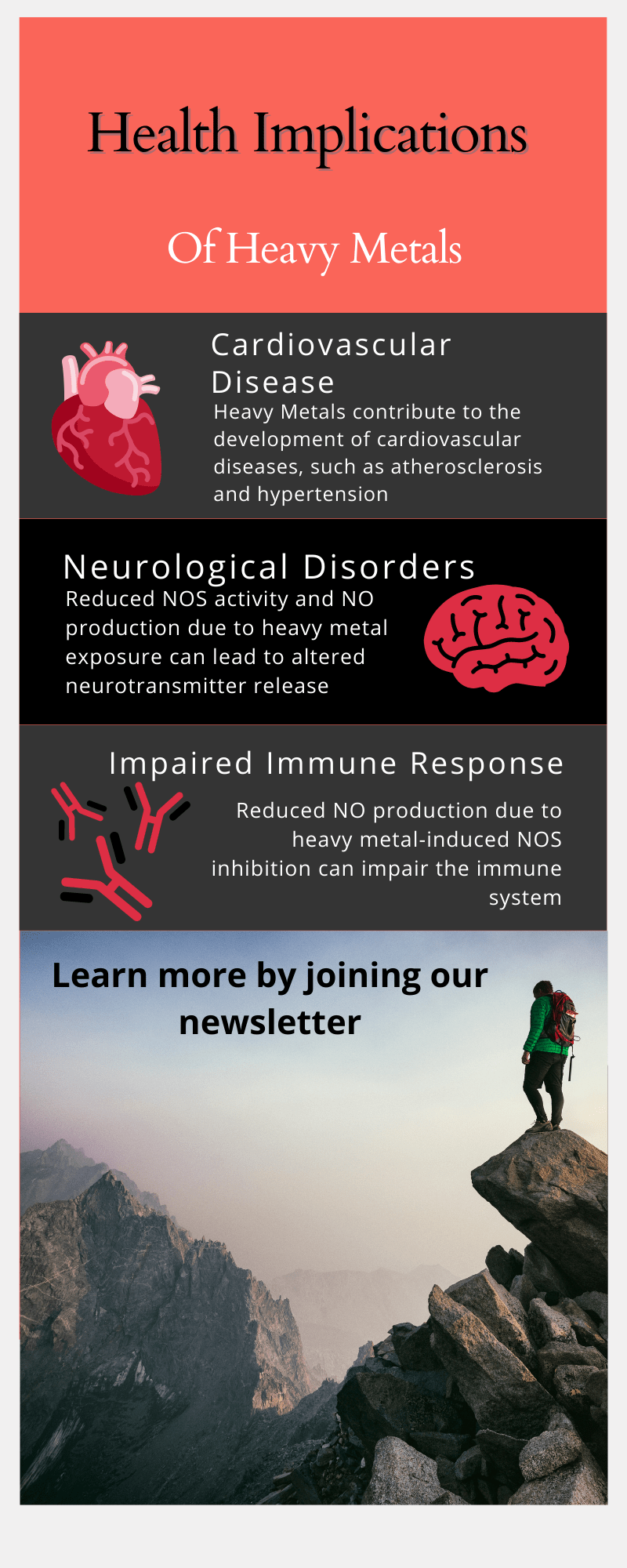
Strategies to Counteract Heavy Metal-Induced NOS Inhibition
A. Chelation Therapy
Chelation therapy involves the administration of chelating agents, such as ethylenediaminetetraacetic acid (EDTA) or dimercaptosuccinic acid (DMSA), which bind to heavy metals and facilitate their excretion from the body. By reducing the body’s burden of heavy metals, chelation therapy can help restore NOS activity and improve overall health (14).
B. Antioxidant Supplementation
Antioxidants, such as vitamins C and E, can help counteract oxidative stress from heavy metals and protect NOS activity (15). Supplementation with antioxidants may help restore NO production and support overall health in individuals exposed to heavy metals.
C. Nutritional and Lifestyle Interventions
Consuming a diet rich in antioxidants, essential nutrients, and anti-inflammatory compounds can help support NOS activity and counteract the effects of heavy metal exposure (16). Additionally, engaging in regular physical activity, maintaining healthy body weight, and avoiding exposure to environmental pollutants can further protect NOS function and overall health.
Conclusion
Heavy metals can negatively impact nitric oxide synthase production through various mechanisms, including inducing oxidative stress, disrupting NOS expression and function, and inhibiting NO bioavailability. The detrimental effects of heavy metals on NOS activity can contribute to the development of cardiovascular diseases, neurological disorders, and impaired immune responses. Chelation therapy, antioxidant supplementation, and nutritional and lifestyle interventions can be employed to counteract these effects. Individuals can proactively protect their health and mitigate the risks associated with heavy metal exposure by understanding the relationship between heavy metals and NOS production.
A Comprehensive Approach to Support NOS Production
This article discusses how can some components contribute to heavy metal detoxification and supports NOS production.
EDTA
Ethylenediaminetetraacetic acid (EDTA) is a well-known chelating agent that binds to heavy metals, such as lead, cadmium, and mercury, facilitating their excretion from the body (17). By removing heavy metals, EDTA can help restore NOS activity and mitigate the negative effects of these metals on nitric oxide (NO) production (18).
Modified Citrus Pectin
Modified citrus pectin is a form of pectin that has been altered to improve its bioavailability and absorption. It has been shown to bind and remove heavy metals from the body, such as lead, mercury, and cadmium (19). Modified citrus pectin can help protect NOS activity and support NO production by aiding in heavy metal detoxification.
Chlorella
Chlorella is a single-celled green alga that has been shown to possess heavy metal-binding properties, particularly for mercury (20). By assisting in removing heavy metals from the body, chlorella can help alleviate the negative effects of these metals on NOS production and support overall health.
Cilantro
Cilantro, also known as coriander, has been shown to have heavy metal-chelating properties, particularly for lead and mercury (21). By aiding in detoxifying heavy metals, cilantro can help protect NOS activity and support NO production.
Shilajit
Shilajit, a natural resinous substance found in the Himalayas, has been reported to have antioxidant and anti-inflammatory properties, which may help counteract heavy metal-induced oxidative stress and inflammation (22). Shilajit can help protect NOS activity and maintain NO production by reducing oxidative stress. Additionally, shilajit has been reported to possess metal-chelating properties, which may further contribute to its heavy metal detoxification effects (23).
Zeolite
Zeolites are natural or synthetic minerals with a unique porous structure, which allows them to bind to and trap heavy metals, such as lead, cadmium, and mercury (24). By assisting in removing heavy metals from the body, zeolites can help protect NOS activity and support NO production.
References:
(1) Valko, M., Morris, H., & Cronin, M. T. (2005). Metals, toxicity and oxidative stress. Current Medicinal Chemistry, 12(10), 1161-1208. https://doi.org/10.2174/0929867053764635
(2) Förstermann, U., & Sessa, W. C. (2012). Nitric oxide synthases: regulation and function. European Heart Journal, 33(7), 829-837. https://doi.org/10.1093/eurheartj/ehr304
(3) Förstermann, U., & Münzel, T. (2006). Endothelial nitric oxide synthase in vascular disease: from marvel to menace. Circulation, 113(13), 1708-1714. https://doi.org/10.1161/CIRCULATIONAHA.105.602532
(4) Brüne, B., Schmidt, K. U., & Ullrich, V. (1990). Activation of soluble guanylate cyclase by carbon monoxide and inhibition by superoxide anion. European Journal of Biochemistry, 192(2), 683-688. https://doi.org/10.1111/j.1432-1033.1990.tb19283.x
(5) Ercal, N., Gurer-Orhan, H., & Aykin-Burns, N. (2001). Toxic metals and oxidative stress part I: mechanisms involved in metal-induced oxidative damage. Current Topics in Medicinal Chemistry, 1(6), 529-539. https://doi.org/10.2174/1568026013394831
(6) Pacher, P., Beckman, J. S., & Liaudet, L. (2007). Nitric oxide and peroxynitrite in health and disease. Physiological Reviews, 87(1), 315-424. https://doi.org/10.1152/physrev.00029.2006
(7) Kielstein, J. T., & Cooke, J. P. (2005). Cardiology and nephrology converge on a common problem: asymmetric dimethylarginine (ADMA), an endogenous inhibitor of nitric oxide synthase, predicts cardiovascular events. Journal of the American Society of Nephrology, 16(9), 2454-2457. https://doi.org/10.1681/ASN.2005060610
(8) Böger, R. H. (2006). Asymmetric dimethylarginine, an endogenous inhibitor of nitric oxide synthase, explains the “L-arginine paradox” and acts as a novel cardiovascular risk factor. Journal of Nutrition, 136(10), 2882S-2887S. https://doi.org/10.1093/jn/136.10.2882S
(9) Vaziri, N. D. (2008). Mechanisms of lead-induced hypertension and cardiovascular disease. American Journal of Physiology-Heart and Circulatory Physiology, 295(2), H454-H465. https://doi.org/10.1152/ajpheart.00158.2008
(10) Navas-Acien, A., Guallar, E., Silbergeld, E. K., & Rothenberg, S. J. (2007). Lead exposure and cardiovascular disease: a systematic review. Environmental Health Perspectives, 115(3), 472-482. https://doi.org/10.1289/ehp.9785
(11) Farina, M., Avila, D. S., da Rocha, J. B., & Aschner, M. (2013). Metals, oxidative stress and neurodegeneration: a focus on iron, manganese and mercury. Neurochemistry International, 62(5), 575-594. https://doi.org/10.1016/j.neuint.2012.12.006
(12) Sanders, T., Liu, Y., Buchner, V., & Tchounwou, P. B. (2009). Neurotoxic effects and biomarkers of lead exposure: a review. Reviews on Environmental Health, 24(1), 15-45. https://doi.org/10.151 5/reveh.2009.24.1.15
(13) Bogdan, C. (2001). Nitric oxide and the immune response. Nature Immunology, 2(10), 907-916. https://doi.org/10.1038/ni1001-907
(14) Flora, S. J., & Pachauri, V. (2010). Chelation in metal intoxication. International Journal of Environmental Research and Public Health, 7(7), 2745-2788. https://doi.org/10.3390/ijerph7072745
(15) Lobo, V., Patil, A., Phatak, A., & Chandra, N. (2010). Free radicals, antioxidants and functional foods: Impact on human health. Pharmacognosy Reviews, 4(8), 118-126. https://doi.org/10.4103/0973-7847.70902
(16) Crinnion, W. J. (2010). The role of nutritional supplements in the treatment of heavy metal toxicity. Alternative Medicine Review, 15(1), 33-47. http://archive.foundationalmedicinereview.com/publications/15/1/33.pdf
(17) Flora, S. J., & Pachauri, V. (2010). Chelation in metal intoxication. International Journal of Environmental Research and Public Health, 7(7), 2745-2788. https://doi.org/10.3390/ijerph7072745
(18) Vaziri, N. D. (2008). Mechanisms of lead-induced hypertension and cardiovascular disease. American Journal of Physiology-Heart and Circulatory Physiology, 295(2), H454-H465. https://doi.org/10.1152/ajpheart.00158.2008
(19) Eliaz, I., Weil, E., & Wilk, B. (2019). Integrative medicine and the role of modified citrus pectin/alginates in heavy metal chelation and detoxification – five case reports. Functional Foods in Health and Disease, 8(12), 430-443. https://doi.org/10.31989/ffhd.v8i12.569
(20) Uchikawa, T., Yasutake, A., Kumamoto, Y., Maruyama, I., Kumamoto, S., & Ando, Y. (2011). The influence of Parachlorella beyerinckii CK-5 on the absorption and excretion of methylmercury (MeHg) in mice. Journal of Toxicological Sciences, 36(1), 121-130. https://doi.org/10.2131/jts.36.121
(21) Aga, M., Iwaki, K., Ueda, Y., Ushio, S., Masaki, N., Fukuda, S., … & Ito, Y. (2001). Preventive effect of Coriandrum sativum (Chinese parsley) on localized lead deposition in ICR mice. Journal of Ethnopharmacology, 77(2-3), 203-208. https://doi.org/10.1016/S0378-8741(01)00289-X
(22) Carrasco-Gallardo, C., Guzmán, L., & Maccioni, R. B. (2012). Shilajit: a natural phytocomplex with potential procognitive activity. International Journal of Alzheimer’s Disease, 2012, 674142. https://doi.org/10.1155/2012/674142
(23) Bhattacharyya, S., & Pal, D. (2013). In vitro study of the effects of Shilajit on the activities of Ehrlich ascites tumor cells. Pharmaceutical Biology, 51(2), 269-272. https://doi.org/10.3109/13880209.2012.727360
(24) Selvam, T., Schwieger, W., & Dathe, W. (2017). The potential of natural and modified zeolites for heavy metal capture in contaminated waters. In Natural Mineral Nanotubes (pp. 363-380). CRC Press. https://doi.org/10.1201/b18522-16


